March 10, 2019
Prelims Pointers
March 10, 2019
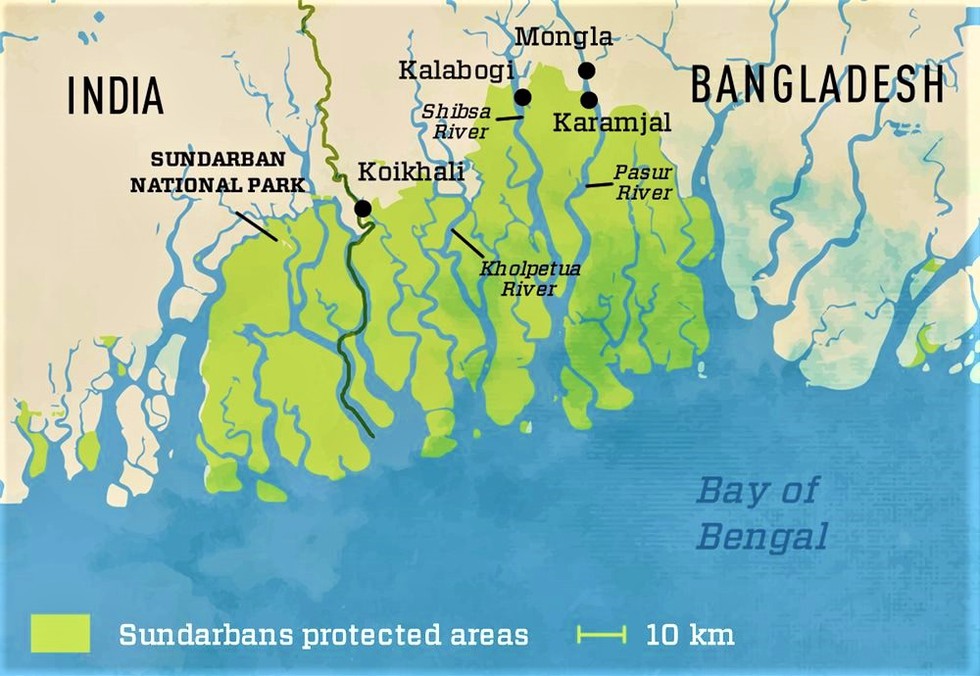
About:
- The Sundarbans comprises hundreds of islands and a network of rivers, tributaries and creeks in the delta of the Ganga and the Brahmaputra at the mouth of the Bay of Bengal in India and Bangladesh.
- The Indian Sundarbans constitutes over 60% of the country’s total mangrove forest area.
- It is the 27th Ramsar Site in India, and with an area of 4,23,000 hectares is now the largest protected wetland in the country.
Criteria’s met for Ramsar recognition:
- It met 4 of the 9 criteria required for the status of ‘Wetland of International Importance’ — presence of rare species and threatened ecological communities, biological diversity, significant and representative fish and fish spawning ground and migration path.
- The Indian Sundarbans, also a UNESCO world heritage site, is home to the Royal Bengal Tiger.
- It is also home to rare and globally threatened species, such as the critically endangered northern river terrapin (Batagur baska), the endangered Irrawaddy dolphin (Orcaella brevirostris), and the vulnerable fishing cat (Prionailurus viverrinus).
- Two of the world’s four horseshoe crab species, and 8 of India’s 12 species of kingfisher are also found here.
- It is also home to 2,626 faunal species and 90% of the country’s mangrove varieties.
Threats faced by it:
- Over four million people live on the northern and north-western periphery of the Indian Sundarbans, putting pressure on the ecosystem.
- The Ramsar Information Sheet lists fishing and harvesting of aquatic resources as a “high impact” actual threat to the wetland.
- The other threats are from dredging, oil and gas drilling, logging and wood harvesting, hunting and collecting terrestrial animals.
- Salinity has been categorised as a medium and tourism as a low impact actual threat in the region.
- Along with anthropogenic pressures, it is also vulnerable to climate change.
Ramsar convention:
- Official name of Ramsar Convention: The Convention on Wetlands of International Importance.
- What is it? It is an international agreement promoting the conservation and wise use of wetlands.
- Background: The convention was adopted in the Iranian city of Ramsar in 1971 and came into force in 1975.
- It is the only global treaty to focus on a single ecosystem.
- Importance of conserving wetlands:
- Traditionally viewed as a wasteland or breeding ground of disease, wetlands, critical for biodiversity, actually provide freshwater and food, and serve as nature’s shock absorber.
- Wetlands are disappearing rapidly, with recent estimates showing that 64% or more of the world’s wetlands have vanished since 1900.
- Major changes in land use for agriculture and grazing, water diversion for dams and canals and infrastructure development are considered to be some of the main causes of loss and degradation of wetlands.
Prelims Pointers
March 10, 2019
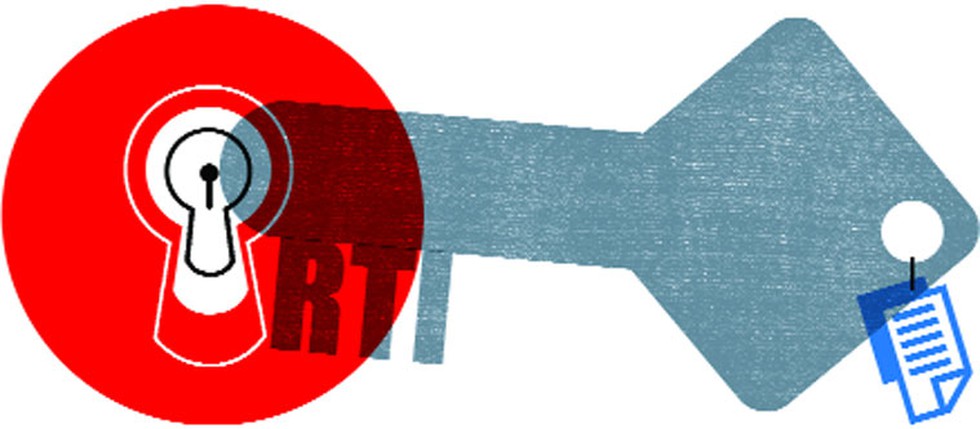
About:
- Background:
- The Indian Official Secrets Act, 1889 was brought in with the main objective of curbing the voice of a large number of newspapers that were opposing the British policies.
- It was amended and made more stringent in the form of The Indian Official Secrets Act, 1904, during Lord Curzon’s tenure as Viceroy of India.
- The Indian Official Secrets Act, 1889 was brought in with the main objective of curbing the voice of a large number of newspapers that were opposing the British policies.
- Present version: In 1923, a newer version was notified. The Indian Official Secrets Act, 1923 was extended to all matters of secrecy and confidentiality in governance in the country.
- Objective:
- It broadly deals with two aspects — spying or espionage, covered under Section 3, and disclosure of other secret information of the government, under Section 5.
- Under Section 5, both the person communicating the information, and the person receiving the information, can be punished.
- It broadly deals with two aspects — spying or espionage, covered under Section 3, and disclosure of other secret information of the government, under Section 5.
- Secret information:
- Secret information can be any official code, password, sketch, plan, model, article, note, document or information.
- For classifying a document, a government Ministry or Department follows the Manual of Departmental Security Instructions, 1994, not under OSA.
- Also, OSA itself does not say what a “secret” document is. It is the government’s discretion to decide what falls under the ambit of a “secret” document to be charged under OSA.
- Secret information can be any official code, password, sketch, plan, model, article, note, document or information.
RTI vs OSA:
- It has often been argued that the law is in direct conflict with the Right to Information Act, 2005.
- Section 22 of the RTI Act provides for its primacy vis-a-vis provisions of other laws, including OSA. So, if there is any inconsistency in OSA with regard to furnishing of information, it will be superseded by the RTI Act.
- However, under Sections 8 and 9 of the RTI Act, the government can refuse information.
- Effectively, if government classifies a document as “secret” under OSA Clause 6, that document can be kept outside the ambit of the RTI Act, and the government can invoke Sections 8 or 9. Legal experts see this as a loophole.
Prelims Pointers
March 10, 2019
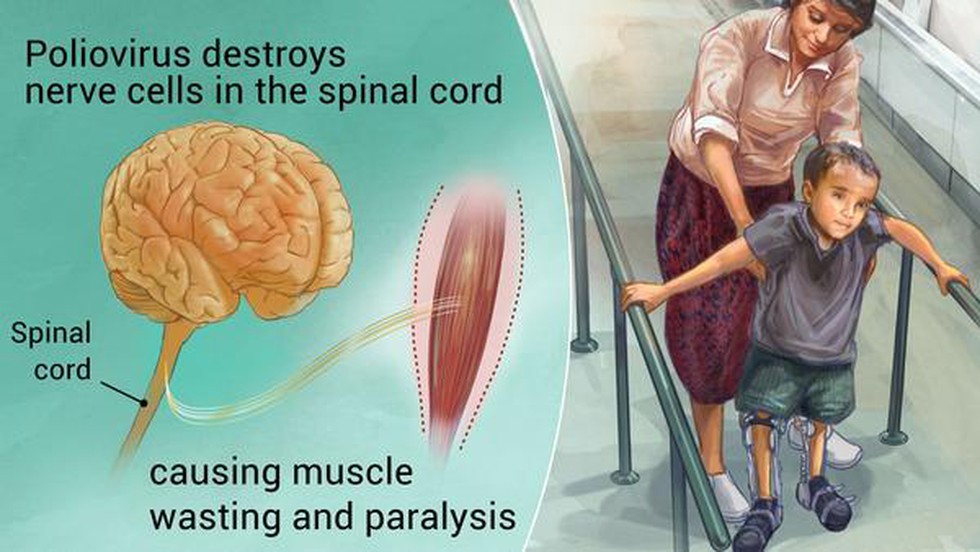
About:
- Poliomyelitis (Polio) is a highly infectious viral disease, mainly affecting children.
- The virus is transmitted from person-to-person, mainly through the faecal-oral route.
- The poliovirus invades the nervous system and can cause irreversible paralysis.
- There is no cure for polio, only treatment to alleviate the symptoms. Polio can be prevented through immunization.
- Strains: There are three types of polio virus strains – P1, P2 and P3. P2 was eradicated globally in 1999. The last case due to type-2 wild poliovirus globally was reported from Aligarh in India in 1999.
Vaccine: There are six different vaccines to stop polio transmission –
- Inactivated polio vaccine (IPV) – protects against poliovirus types 1, 2, and 3.
- Trivalent oral polio vaccine (tOPV) – protects against poliovirus types 1, 2, and 3 - following the "OPV Switch" in April 2016, tOPV is no longer in use.
- Bivalent oral polio vaccine (bOPV) – protects against poliovirus types 1, and 3.
- Monovalent oral polio vaccines (mOPV1, mOPV2 and mOPV3) – protect against each individual type of poliovirus, respectively.
Indian Scenario:
- India attained a polio free status in 2014 after successfully eliminating the wild P1 and P3 strains.
- The last case was reported on 13 January 2011, when Rukhsar from Howrah was infected with type-1 polio virus.
- India eliminated the type-2 strain in 2016, and subsequently, in April 2016, India stopped the TOPV and replaced it with bivalent vaccine containing P1 and P3. Thus, Children born after April 2016 in India have no immunity to type-2 polio virus.
- To maintain the polio-free status of the country, government is taking following measures:
- Population immunity against polio is being maintained by observing polio campaigns every year.
- Government of India is providing Inactivated Polio Vaccine in addition to the bivalent Oral Polio Vaccine under its Universal Immunization Programme to provide double protection against polio.
- Sensitivity of polio surveillance is maintained through Acute Flaccid Paralysis (AFP) surveillance in human and environment surveillance to detect any polio threat as early as possible and respond quickly to mitigate the risk of circulation.
Prelims Pointers
March 10, 2019
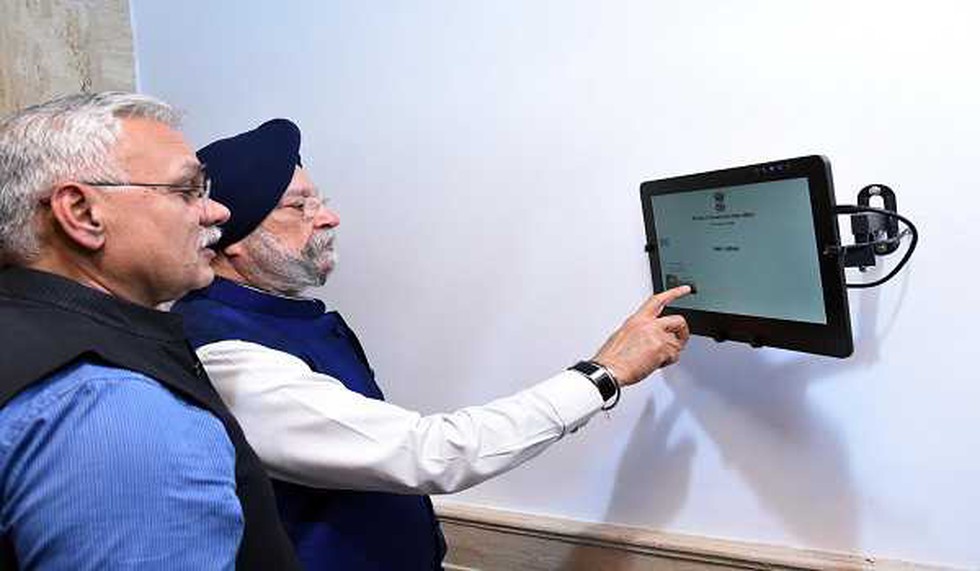
About:
- India Urban Observatory: The state-of-the-art India Urban Observatory will plug the gap into the myriad sources of data from cities, both from real-time and archival sources.
- Video Wall: The Video Wall will showcase the insights gained from the Observatory and the various Missions/ offices with the idea to proactively engage with citizens/ visitors in spreading awareness about the various initiatives of the Ministry.
- Significance:
- As cities begin to implement ‘smart’ solutions, data becomes a significant asset and enabler for data driven Governance, leading to urban transformation.
- The India Urban Observatory would progressively become the chief data analysis and Management Hub of the Ministry.
- It would enable evidence-based policy formulation, capacity building of ecosystem partners on data-driven governance, foster innovation through development of newer and better use cases thereby enabling solutions at scale and speed.
- As cities begin to implement ‘smart’ solutions, data becomes a significant asset and enabler for data driven Governance, leading to urban transformation.
Data Smart Cities strategy:
- The India Urban Observatory is an important component of the recently launched Data Smart Cities strategy that envisions to create a ‘Culture of Data’ in cities, for intelligent use of data in addressing complex urban challenges.
- The strategy aims to lay down the basic premise, three foundational pillars vis. People, Process, Platform, and a suggested roadmap for cities for intelligent use of data.
- Data Maturity Assessment Framework (DMAF):
- The DataSmart Cities Strategy also presents a Data Maturity Assessment Framework (DMAF), that measures the readiness and evolution of cities in their efforts to implementing the Data strategy.
- The assessment of cities as per the DMAF will foster a culture of data and drive innovation in India’s Smart Cities through a spirit of collaboration and healthy competition.
Prelims Pointers
March 10, 2019
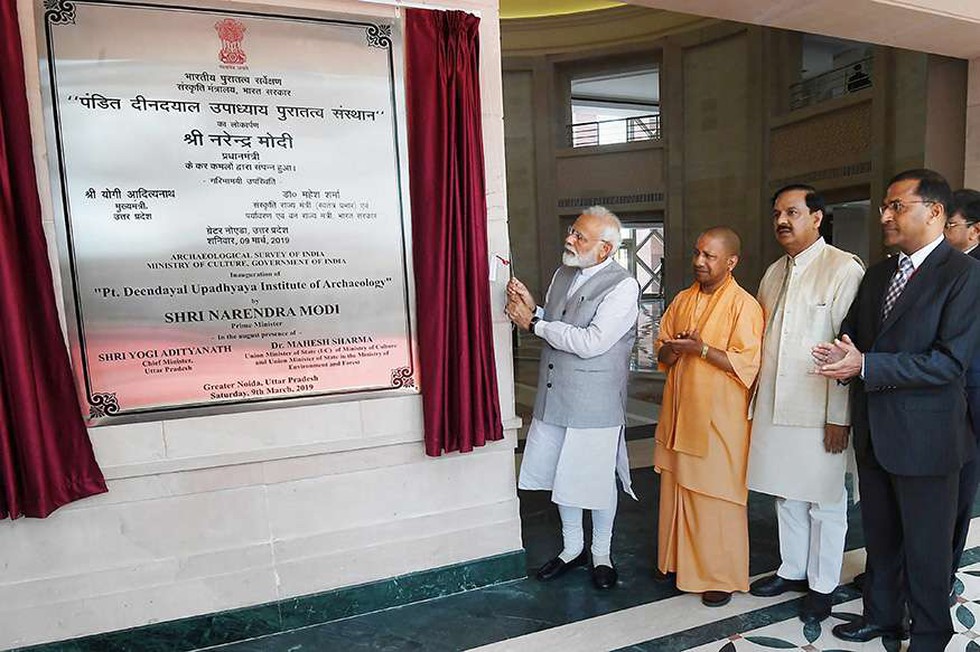
About:
- Parent body: The Institute of Archaeology (IA) is an academic wing of ASI under the Ministry of Culture.
- Location: Greater Noida, Uttar Pradesh.
- Mandate: The institute will provide modern amenities for research scholars and students from India and all over the world which enables them to achieve their full potential in the field of Archaeology.
Archaeological Survey of India (ASI)?
- Mandate: The Archaeological Survey of India is responsible for archaeological research and the conservation and preservation of cultural monuments in the country.
- Parent act: Under the provisions of the Ancient Monuments and Archaeological Sites and Remains Act of 1958 (AMASR Act, 1958), the ASI administers more than 3650 ancient monuments, archaeological sites and remains of national importance.
- Established in: 1861 by Alexander Cunningham (He also became its first Director-General).
- HQ: New Delhi.
- Parent organisation: It is an attached office to the Ministry of Culture.
Prelims Pointers
March 10, 2019

About:
- Objective: 'Bolo' app aims to help children in primary school learn to read in Hindi and English.
- Features:
- The free app, which is being launched in India first, uses Google's speech recognition and text-to-speech technology.
- The app features an animated character 'Diya', who encourages children to read stories aloud and helps if the child is unable to pronounce a word. It also lauds the reader when she completes the reading.
- The app will be expanded to other Indic languages like Bengali, soon.
- The free app, which is being launched in India first, uses Google's speech recognition and text-to-speech technology.
- Significance:
- According to the ASER 2018 report, only half of students enrolled in grade 5 in rural India can confidently read a grade 2 level textbook.
- Google piloted the 'Bolo' app in about 200 villages in Uttar Pradesh and early results reportedly show that 64 per cent of children showed an improvement in reading proficiency in just three months.
- According to the ASER 2018 report, only half of students enrolled in grade 5 in rural India can confidently read a grade 2 level textbook.
Prelims Pointers
March 10, 2019

About:
- Features: It is an unmanned spacecraft weighing 585-kilogram.
- Timeline:
- It was launched atop a Falcon 9 rocket from the private US-based SpaceX company from Cape Canaveral in Florida on February 22.
- The trip is scheduled to last seven weeks, with the touch down due on April 11.
- It was launched atop a Falcon 9 rocket from the private US-based SpaceX company from Cape Canaveral in Florida on February 22.
- Mission objective:
- For Israel, the landing itself is the main mission.
- But the spacecraft also carries a scientific instrument to measure the lunar magnetic field, which will help understanding of the moon's formation.
- It also carries a "time capsule" loaded with digital files containing a Bible, children's drawings, Israeli songs, memories of a Holocaust survivor and the Israeli flag.
- For Israel, the landing itself is the main mission.
- Bodies involved: It was launched by NGO SpaceIL and state-owned Israel Aerospace Industries.
- Nomenclature: Beresheet means Genesis for Hebrew.
Renewed interest in Moon:
- So far, only Russia, the United States and China have made the 384,000-kilometre journey and landed on the moon. After China and Israel, India hopes to become the fifth lunar country with its Chandrayaan-2 mission. It aims to put a craft with a rover onto the moon's surface.
- The Israeli mission comes amid renewed global interest in the moon.
- China's Chang'e-4 made the first-ever soft landing on the far side of the moon in January 2019, after a probe sent by China made a lunar landing elsewhere in 2013.
- Japan also plans to send a small lunar lander, called SLIM, to study a volcanic area around 2020-2021.
- As for the Americans, who have not been back to the moon since 1972, a return is now the official policy of NASA, according to guidelines issued by President Donald Trump in 2017.
Prelims Pointers
March 10, 2019

About:
- Features: DD Free Dish is India's only open access Direct-To-Home (DTH) Service from Doordarshan which is provided free of cost (no monthly fee).
- DD FreeDish viewers can watch 80 SD MPEG-2 TV channels and 18 SD MPEG-4 channels apart from 40 radio channels.
- DD Free Dish has a reach of approximately 30 million households which is 15 % of the total TV Households in the country.
- DD FreeDish viewers can watch 80 SD MPEG-2 TV channels and 18 SD MPEG-4 channels apart from 40 radio channels.
- Background: Doordarshan started its DTH service DD Direct+ in 2004, which was re-named as DD Free Dish in 2013.
- Agencies involved: DD Free Dish DTH service is owned and operated by Public Service Broadcaster Prasar Bharati.
Direct to Home (DTH) Broadcasting Service?
- Meaning: The DTH technology enables a broadcasting company to directly beam the signal to your TV set through a receiver that is installed in the house. There is no need for a separate cable connection.
- Working:
- In India, DTH Service refers to the distribution of multi-channel TV programmes in Ku Band by using a satellite system by providing TV signals direct to subscribers' premises.
- For DTH connection the broadcasting company provides a set that comprises the dish and a receiving set. The company beams an encrypted signal that only the set installed in your household can receive and enable viewing.
- Advantages of DTH:
- One can do away with the cable operator who will give you channels of his choice and there is no assurance of quality.
- The quality of signals in this case is expected to be superior since the signal is not split through a cable.
- By choosing just the signals that one needs, there is a possibility of reducing your monthly cable bill.
- Disadvantages of DTH: The high capital cost that has to be borne initially. Since this involves setting up of a receiving apparatus at the subscriber’s end, the cost can be prohibitively high.
Prelims Pointers
March 10, 2019
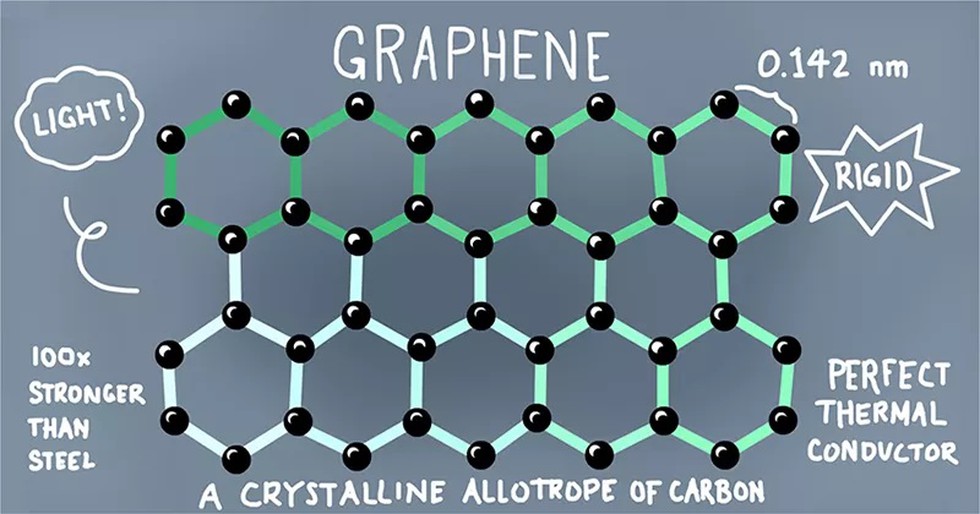
LPCVD device:
- Chemical vapor deposition (CVD) is a deposition method used to produce high quality, high-performance, solid materials, typically under vacuum. The process is often used in the semiconductor industry to produce thin films.
- Low-pressure CVD (LPCVD) involved CVD at sub-atmospheric pressures. Reduced pressures tend to reduce unwanted gas-phase reactions and improve film uniformity across the wafer.
Recent development:
- The LPCVD device developed indigenously by CSIR-NPL costs about Rs.5,00,000, which is one-tenth of the imported ones.
- Generally, LPCVD devices have three mass flow meters through which hydrogen, argon and hydrocarbon gases are supplied to grow the graphene.
- Since the mass flow meters are expensive, the CSIR-NPL team used replaced two such meters that supply argon and hydrocarbon with calibrated rotameters.
- Generally, LPCVD devices have three mass flow meters through which hydrogen, argon and hydrocarbon gases are supplied to grow the graphene.
- The quality of the single-layer graphene produced is metrology-grade, and the device is ready for technology transfer. Though there are about one billion grains in 4x2 square-inch single-layer graphene, the grains are highly connected to give a single continuous layer of graphene.
Graphene?
- Graphene is a form of carbon and a super-strong, ultra-light material discovered in 2004.
- Graphene consists of a single layer of carbon atoms arranged in a hexagonal lattice, each atom bound to its neighbours by chemical bonds. The elasticity of these bonds produces resonant vibrations known as phonons.
- It enables flexible electronic components, enhances solar cell capacity, and promises to revolutionise batteries.
Prelims Pointers
March 10, 2019
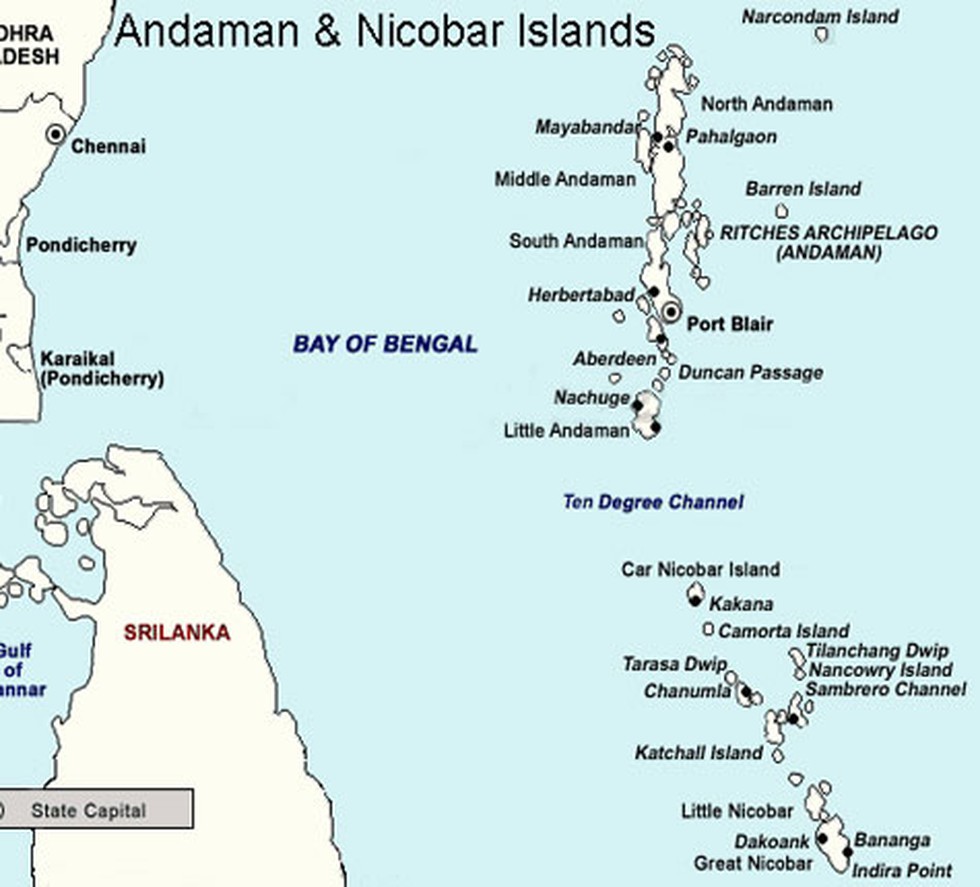
About:
- Aves Island is an island of the Andaman Islands.
- It belongs to the Stewart Sound Island sub-group in the North and Middle Andaman administrative district, part of the Indian union territory of Andaman and Nicobar Islands.
Timeline:
- December 2018: The Government of India issued a coastal regulation zone notification that largely allows tourism and development projects located near coasts in mainland States to come up closer to the sea.
- January 2019: It issued an Island Zone Protection Notification in to allow similar relaxations in the Andaman & Nicobar (A&N) Islands. It divides the big or major, Andaman Islands into two groups –
- Group 1: Islands with geographical areas of > 1,000 sq. Km.
- Group 2: Islands with geographical areas of > 100 sq. Km but < 1,000 sq. km. the new notification allows development at 20 m and beyond in small islands.
- Group 1: Islands with geographical areas of > 1,000 sq. Km.
- February 2019: However, the proposed Aves island project was not cleared by expert committee on coastal clearance because it was located 20 m away from the High Tide line (HTL). But the existing coastal zone regulations require such projects to be at least 50 m away from the HTL.
Steps for development of Andamans:
- The Centre has been working on a long-term plan to make several of the A&N islands more conducive to tourism.
- in 2018, the Home Ministry revived an Island Development Agency that would coordinate infrastructure projects to aid tourism in the A&N islands as well as Lakshadweep.
March 9, 2019
Prelims Pointers
March 9, 2019

About:
- Objectives:
- Provide an integrated approach towards cooling and related areas including reduction in the cooling demand, in order to reduce emissions.
- Assessment of cooling requirements across the sectors in the next 20 years and the associated refrigerant demand and energy use.
- Map the technologies available to cater the cooling requirement including passive interventions, refrigerant-based technologies and alternative technologies such as not-in-kind technologies.
- Providing skill training to RAC (Refrigeration and Air Conditioning) service technicians.
- Develop an R&D innovation ecosystem for indigenous development of alternative technologies.
- Provide an integrated approach towards cooling and related areas including reduction in the cooling demand, in order to reduce emissions.
- Targets:
- Curtailing the cooling energy requirements by 25-40 %, Reduction of cooling demand across sectors by 20-25 % and refrigerant demand by 25-30 % by 2037-38.
- Training and certification of 100,000 serving sector technicians by 2022-23.
- Curtailing the cooling energy requirements by 25-40 %, Reduction of cooling demand across sectors by 20-25 % and refrigerant demand by 25-30 % by 2037-38.
Prelims Pointers
March 9, 2019

About:
- Objective: To create awareness amongst the domestic consumers to encourage transition towards energy efficient microwave ovens and Washing machines.
- Duration: Initially, the program for Microwave Ovens and Washing Machines will be implemented on a ‘VOLUNTARY’ basis and will be valid up to 31st December 2020.
- Benefits:
- Government has estimated savings of over 3.0 Billion Units of electricity at consume-end through adoption of Star Rated Microwave Ovens and Washing Machines by 2030.
- This would be equivalent to Green House Gases (GHG) reduction of 2.4 Million-ton of CO2 by the year 2030 through these initiatives.
- Government has estimated savings of over 3.0 Billion Units of electricity at consume-end through adoption of Star Rated Microwave Ovens and Washing Machines by 2030.
- Implementing agency: Bureau of Energy Efficiency (BEE).
- Need of programme:
- The size of Indian Microwave Oven market stood at 1.21 million units in year FY 2017-18 and is projected to grow at a Compound Annual Growth Rate (CAGR) of around 2%.
- The size of Indian Washing Machine market stood at 6.1 million units in year FY 2017-18 and is projected to grow at a CAGR of around 8% fuelled by a growth in urbanization.
- Therefore, it is important to optimize energy performance of Microwave Ovens and Washing Machines.
- The size of Indian Microwave Oven market stood at 1.21 million units in year FY 2017-18 and is projected to grow at a Compound Annual Growth Rate (CAGR) of around 2%.
Prelims Pointers
March 9, 2019

About:
- Full name: National Energy Efficiency Strategy Plan 2031 – UNNATEE (Unlocking NATional Energy Efficiency potential).
- Features:
- It describes the implementation strategy to establish a clear linkage between energy supply-demand scenarios and energy efficiency opportunities.
- It offers a comprehensive roadmap to address India’s environmental and climate change mitigation action through energy efficiency measures.
- It clearly delineates the energy efficiency targets for the respective demand sectors upto the state levels.
- It describes the implementation strategy to establish a clear linkage between energy supply-demand scenarios and energy efficiency opportunities.
- Bodies involved: PwC India has assisted Bureau of Energy Efficiency (BEE) in executing this assignment. This document has been prepared after extensive discussion with various departments, organisations and authorities.
- Way ahead: The document has now been released for larger public consultation and seeking comments/ valuable inputs from all the stakeholders.
Bureau of Energy Efficiency (BEE)?
- The BEE is a statutory body under the Ministry of Power, Government of India.
- It assists in developing policies and strategies with the primary objective of reducing the energy intensity of the Indian economy.
- BEE coordinates with designated consumers, designated agencies, and other organizations in performing the functions assigned to it under the Energy Conservation Act.
Prelims Pointers
March 9, 2019
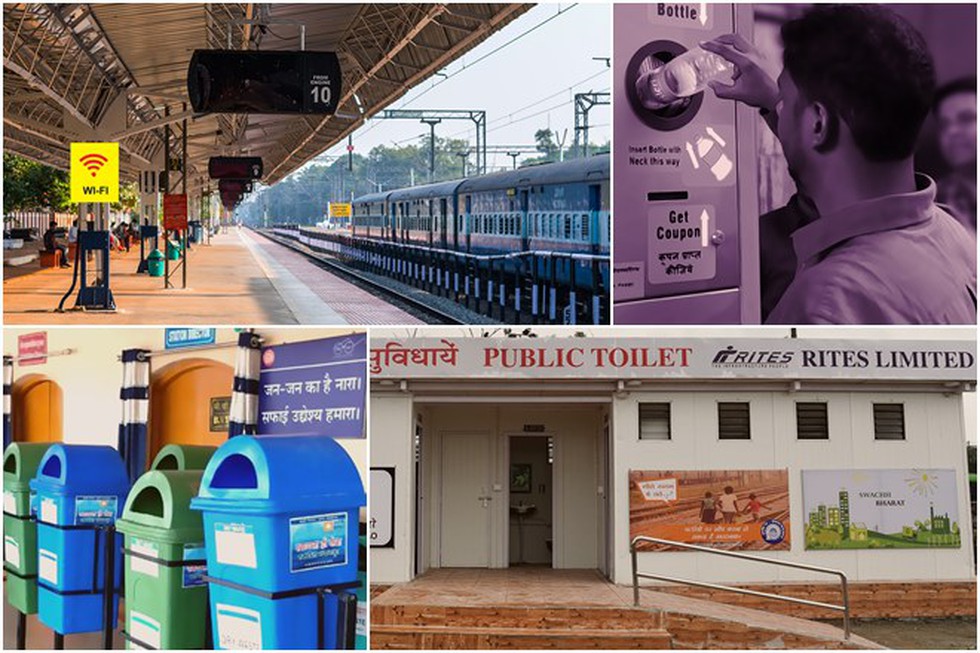
About:
- What is it? ‘Rail Sahyog’ (railsahyog.in) is a web portal.
- Background: It was launched by Minister of Railways in September 2018.
- Objective: To provide a platform for the Corporates & PSUs to contribute to creation of amenities at/near Railway Stations through Corporate Social Responsibility (CSR) funds.
- Features:
- The companies interested in contributing can register their requests on portal.
- The selected applicants will be intimated to deposit the funds with Railways/nominated agencies like RITES/RAILTEL etc which will get the work executed thereafter.
- The companies interested in contributing can register their requests on portal.
- Recent projects launched through Rail Sahyog:
- Giving Wi-Fi Facility at 4,791 stations by Tata Trust.
- Constructing 2,400 Toilets in circulating areas of stations through CSR support from corporates like Coal India Ltd. and its Subsidiaries; NLC; IRFC; CONCOR and PGCIL.
- 5,000 Steel Benches at Railway Stations by General Insurance Corporation.
- Giving Wi-Fi Facility at 4,791 stations by Tata Trust.
Prelims Pointers
March 9, 2019
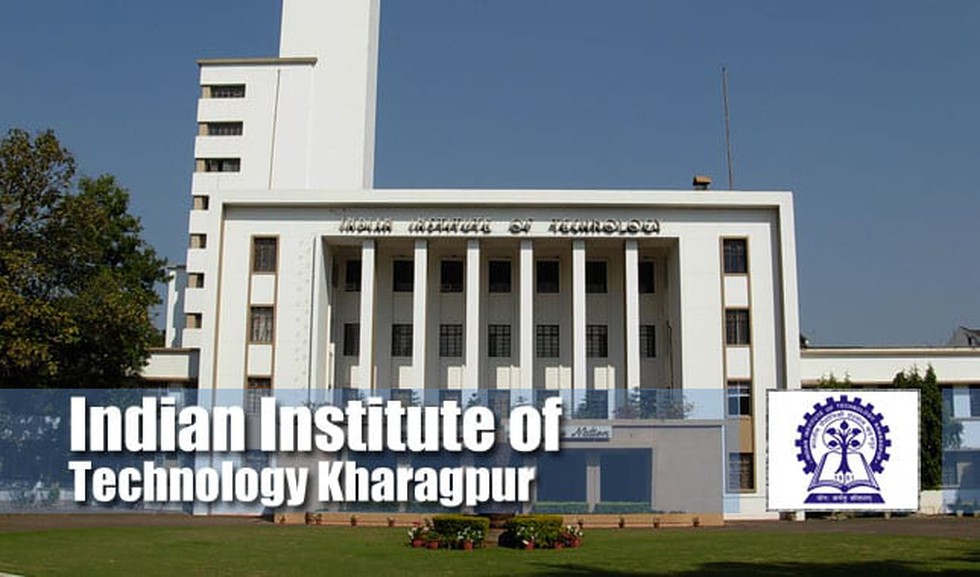
About:
- Objective: To address the need for applied research and development for the inland waterways sector.
- Mandate: The centre will be a hub for latest technology tools for maritime sector. It will provide technological support, research, testing and experimentation facility to the Ministry of Shipping and its subordinate offices such as Inland Waterways of India, Cochin Shipyard Limited and major ports.
- This Centre will focus on following domain areas:
- Ship Design for Coastal/Inland waterways
- Shipbuilding Technology and Structural Design
- Transport Systems & Logistics
- Cryogenic Cargo Handling
- Green/Renewable Energy harvesting from Coastal and Inland waters
- Automation and AI for Maritime Operations
- Ship Design for Coastal/Inland waterways
- Parent programme: It has been setup under Sagarmala programme.
- Funding:
- CICMT is being fully funded under unique and innovative projects under Sagarmala.
- The cost of the project is Rs. 69 crores.
- The funding for CICMT is for 5 years only and once the facility is functional, revenues generated from the end users will make it sustainable.
- CICMT is being fully funded under unique and innovative projects under Sagarmala.
- Significance:
- The centre will reduce India’s dependence on foreign institutions. At the moment there is no testing and experimentation facility available in the country for inland and coastal vessels for which the shipbuilders have to approach various European countries.
- It will also reduce the cost of research drastically and result in cost and time savings for work in the Port and Maritime sector.
- The centre will reduce India’s dependence on foreign institutions. At the moment there is no testing and experimentation facility available in the country for inland and coastal vessels for which the shipbuilders have to approach various European countries.
Prelims Pointers
March 9, 2019
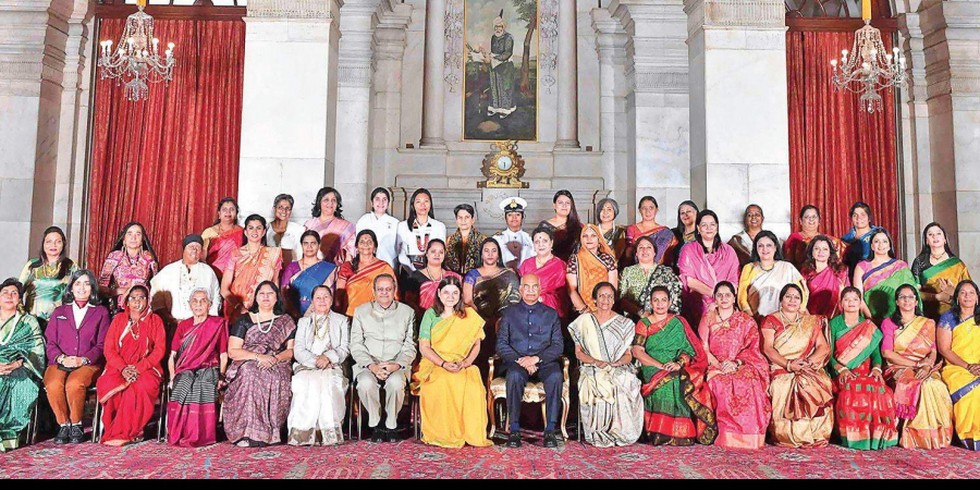
About:
- Nari Shakti Puraskar is the highest civilian honour for women in India.
- Objective: To acknowledge achievements by women and institutions in recognition of their relentless service towards the cause of women empowerment and social welfare.
- Instituted by: The Ministry of Women and Child Development.
- When given? Every year on the occasion of International Women’s Day (March 8).
- Instituted in: 1991.
- Categories: The award is given in six categories, with each category named after eminent women in Indian history. These are -
- Devi Ahilya Bai Holkar Award: named after Ahilya Bai Holkar, 18th-century ruler of Malwa kingdom.
- Kannagi Award: named after Kannagi, a legendary Tamil woman.
- Mata Jijabai Award: named after Mata Jijabai, mother of Shivaji, who founded the Maratha Empire in the 17th century.
- Rani Gaidinliu Zeliang Award: named after Rani Gaidinliu, a 20th-century Naga spiritual and political leader.
- Rani Lakshmi Bai Award: named after Rani Lakshmi Bai, the Queen of Jhansi.
- Rani Rudramma Devi Award (for both men and women): named after Rudrama Devi, a 13th-century ruler of Deccan Plateau.
- Devi Ahilya Bai Holkar Award: named after Ahilya Bai Holkar, 18th-century ruler of Malwa kingdom.
- Cash prize: 1 lakh.
List of awardees for 2018:
- 41 individuals and 3 institutions were given the award.
- The awardees include acid attack victim and social activist Pragya Prasun, Rani Mistri Sunita Devi, first woman marine pilot of India Reshma Nilofer Naha, woman commando trainer Dr Seema Rao, spiritual and motivational speaker Brahma Kumari Shivani and wildlife conservationist Sonia Jabbar.
- This year, the Nari Shakti Puraskar was also awarded to One Stop Centre of Lucknow.
- Tamil Nadu State Social Welfare and Nutritious Meal Department got the award for improving child sex ratio at birth under the Beti Bachao Beti Padhao scheme.
Prelims Pointers
March 9, 2019
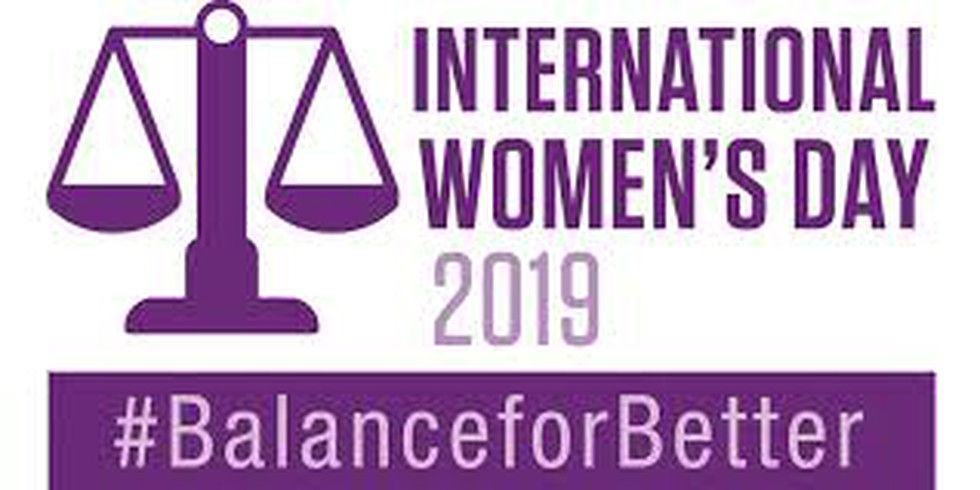
About:
- Date: International Women's Day (IWD) is celebrated on March 8 every year.
- History:
- IWD has occurred for well over a century, with the first IWD gathering in 1911 supported by over a million people in Austria, Denmark, Germany and Switzerland.
- Prior to this the Socialist Party of America, United Kingdom's Suffragists and Suffragettes, and further groups campaigned for women's equality.
- IWD has occurred for well over a century, with the first IWD gathering in 1911 supported by over a million people in Austria, Denmark, Germany and Switzerland.
- Organized by: IWD is not country, group or organization specific. IWD belongs to all groups collectively everywhere.
- Objective: It is a global day celebrating the social, economic, cultural and political achievements of women. The day also marks a call to action for accelerating gender parity.
Theme for 2019: #Balance for Better.
- From grassroots activism to worldwide action, we are entering an exciting period of history where the world expects balance.
- We notice its absence and celebrate its presence. Balance drives a better working world.
- The 2019 #BalanceforBetter campaign runs all year long. It doesn't end on International Women's Day.
Prelims Pointers
March 9, 2019
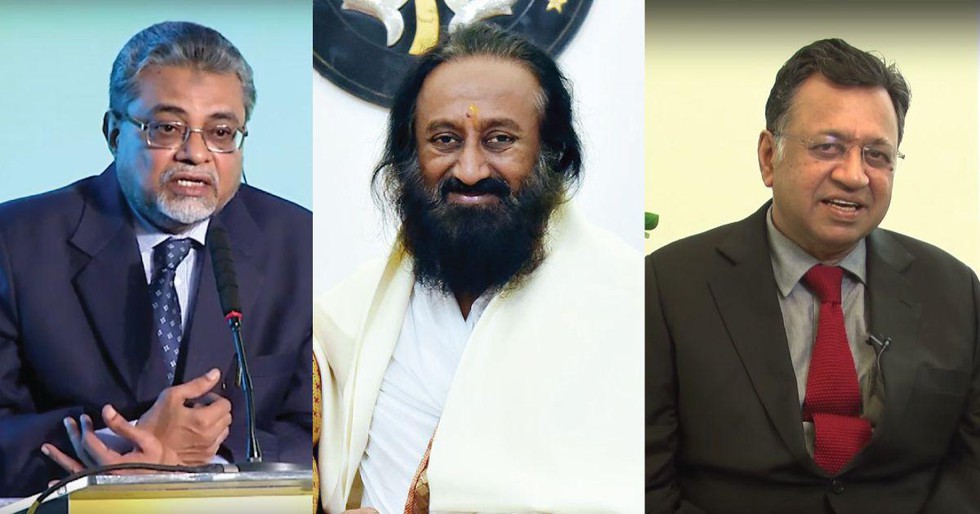
About:
- Composition: Former Supreme court judge Justice (retd) F M Kallifulla will head a panel of mediators in the case. Other members of the panel of mediators include spiritual guru Shri Shri Ravi Shankar and senior advocate Sriram Panchu. The panel of mediators may co-opt more members.
- Timeline:
- Proceedings in the case will be held in Faizabad and process to start within a week.
- The panel of mediators will file a progress report of the mediation proceedings within four weeks and the process should be completed within eight weeks.
- Proceedings in the case will be held in Faizabad and process to start within a week.
- Background:
- A five-judge Constitution Bench headed by Chief Justice Ranjan Gogoi recently had reserved the order after hearing various contesting parties.
- Fourteen appeals have been filed in the apex court against the 2010 Allahabad High Court judgment, delivered in four civil suits, that the 2.77-acre land in Ayodhya be partitioned equally among the three parties -- the Sunni Waqf Board, the Nirmohi Akhara and Ram Lala.
- A five-judge Constitution Bench headed by Chief Justice Ranjan Gogoi recently had reserved the order after hearing various contesting parties.
Prelims Pointers
March 9, 2019
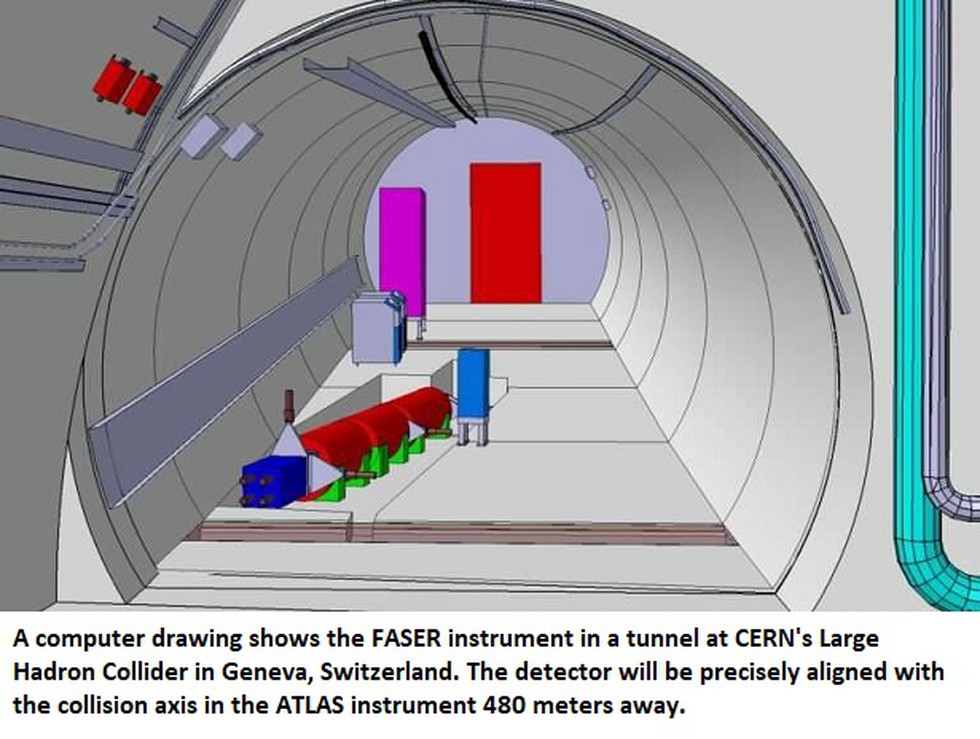
About:
- Objective: FASER's focus is to find light, extremely weakly interacting particles that have so far eluded scientists, even in the high-energy experiments conducted at the CERN-operated Large Hadron Collider (LHC), the largest particle accelerator in the world.
- Seven years ago, scientists discovered the Higgs boson at the LHC, completing one chapter in our search for the fundamental building blocks of the universe.
- But now scientists are looking for new particles. The dark matter problem shows that we don't know what most of the universe is made of.
- Seven years ago, scientists discovered the Higgs boson at the LHC, completing one chapter in our search for the fundamental building blocks of the universe.
- Bodies involved: Initiated by physicists at the University of California, Irvine, the FASER project is funded by grants from the Heising-Simons Foundation and the Simons Foundation – with additional support from CERN, the European Organization for Nuclear Research.
- Location: The FASER detector, which will be one of only eight research instruments at the LHC, is being built and installed during the collider's current hiatus.
- Project Duration: 5-year.
- It will collect data from 2021 to 2023.
- The LHC will be shut down again from 2024 to 2026. During that time, the team hopes to install the larger FASER 2 detector, which will be capable of unveiling an even wider array of mysterious, hidden particles.
- It will collect data from 2021 to 2023.
- Working:
- The FASER instrument is compact, measuring about 1 meter in diameter and 5 meters long.
- It will be placed at a specific point along the 16-mile loop of the LHC, about 480 meters away from the instrument used by the ATLAS Collaboration to discover the Higgs boson.
- As proton beams pass through the interaction point at the ATLAS instrument, they may create new particles that will go through concrete in the LHC tunnel and then into the FASER instrument, which will track and measure the progress of their decay.
- FASER will collect data any time ATLAS is operating.
- The FASER instrument is compact, measuring about 1 meter in diameter and 5 meters long.
CERN?
- The European Organization for Nuclear Research (CERN) is a European research organization that operates the largest particle physics laboratory in the world.
- Established in: 1954.
- Location: Northwest suburb of Geneva on the Franco–Swiss border.
- Members: It has 22-member states. Israel is the only non-European country granted full membership.
- Status: CERN is an official United Nations Observer.
Prelims Pointers
March 9, 2019
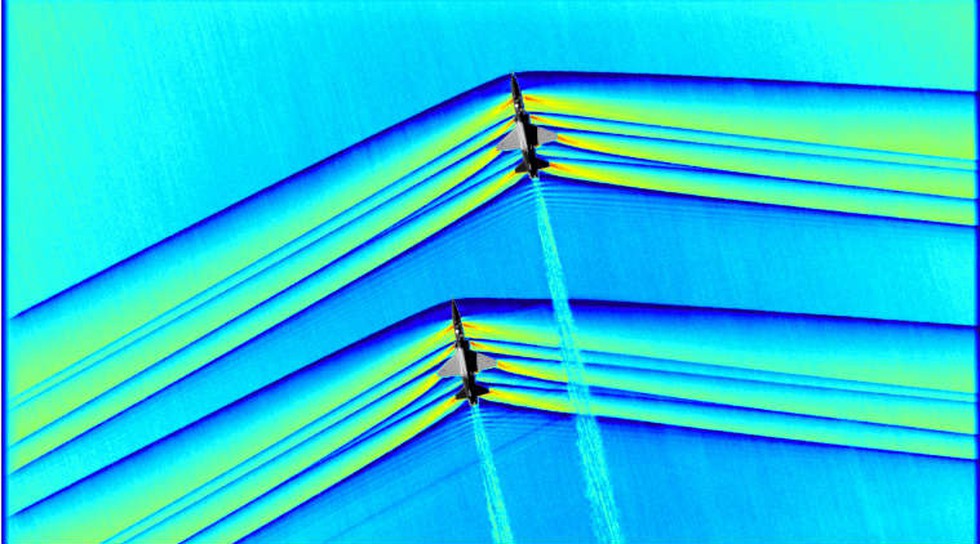
About:
- NASA has captured images of shockwaves from supersonic aircraft, as part of efforts to create a jet that flies faster than the speed of sound without producing sonic boom.
- Using the schlieren photography technique, NASA's images show for the first time the interaction of shockwaves from two supersonic planes in flight.
- The images were captured during the fourth phase of Air-to-Air Background Oriented Schlieren flights (AirBOS), which took place at NASA’s Armstrong Flight Research Center in the US.
- The images depict two T-38 supersonic jets from the US Air Force during a test flight from the research center at Edwards Air Force Base in California.
Supersonic Booms:
- When aircraft fly faster than the speed of sound, shockwaves travel away from the vehicle, and are heard on the ground as a supersonic boom. Shockwaves produced by aircraft merge together as they travel through the atmosphere and are responsible for this boom.
- Supersonic booms have led to restrictions on breaking the sound barrier over land.
- The ability to fly supersonic without a sonic boom may one day result in lifting current restrictions on supersonic flight over land.
- NASA will use the data collected as part of their development of the X-59 Quiet SuperSonic Technology X-plane, which they hope will produce only a quiet rumble rather than a sonic boom.
Mach Number:
- Mach number (designated as M or Ma) is the ratio of the speed of the body to the speed of sound in the undisturbed medium through which the body is traveling.
- E.g. If the body is flying at Mach 2, then its speed is twice the speed of sound in air (which is 332 m/s or 1195 km/hr).
- It is named in honor of Ernst Mach (1838-1916), a physicist from Austria.
- Types of Aircrafts based on Mach Number (Source-NASA):
- Subsonic: M < 1.
- Transonic: M = 1.
- Supersonic: 1 < M < 3.
- High Supersonic: 3 < M < 5.
- Hypersonic: M > 5.
- High Hypersonic: M ~ 25.
March 8, 2019
Prelims Pointers
March 8, 2019
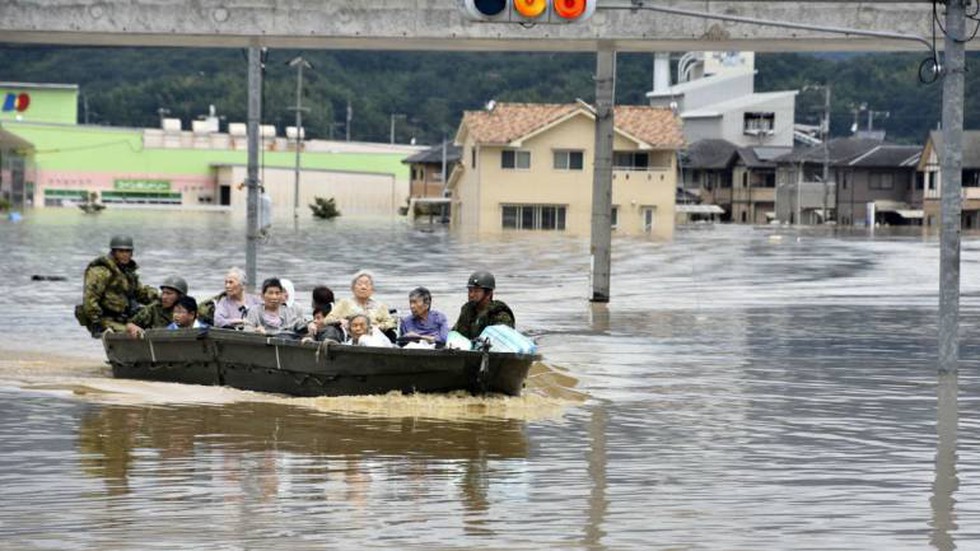
About:
- Components: The Scheme "FMBAP" has been framed by merging the components of two continuing XII Plan schemes titled "Flood Management Programme (FMP)" and "River Management Activities and Works related to Border Areas (RMBA)".
- Objective: To assist the State Governments to provide reasonable degree of protection against floods in critical areas.
- Strategy:
- Adopting structural and non-structural measures and enhancing capabilities of State/Central Government officials in related fields.
- Completion of the on-going projects already approved under FMP.
- Hydro-meteorological observations and Flood Forecasting on common rivers with the neighbouring countries.
- Survey and preparation of DPR etc. of water resources projects on the common rivers with neighbouring countries like Pancheshwar Multipurpose Project, Sapta Kosi-Sun Kosi Projects in Nepal which would benefit both countries.
- Adopting structural and non-structural measures and enhancing capabilities of State/Central Government officials in related fields.
- Coverage: The FMBAP Scheme will be implemented throughout the country. The proposal will benefit towns, villages, industrial establishments, communication links, agricultural fields, infrastructure etc. from floods and erosion in the country.
- Funding pattern:
- The funding pattern for FM Component for works in general category States will continue to be 50% (Centre): 50% (State) and for projects of North Eastern States, Sikkim, J&K, Himachal Pradesh and Uttarakhand, the funding pattern will continue to be 70% (Centre): 30% (State).
- RMBA component being specific to activities in border areas with neighbouring countries will continue to be funded as 100% grant-in-aid / central assistance.
- The funding pattern for FM Component for works in general category States will continue to be 50% (Centre): 50% (State) and for projects of North Eastern States, Sikkim, J&K, Himachal Pradesh and Uttarakhand, the funding pattern will continue to be 70% (Centre): 30% (State).
- Benefits: The works under the scheme will protect valuable land from erosion and flooding and help in maintaining peace along the border.
Prelims Pointers
March 8, 2019
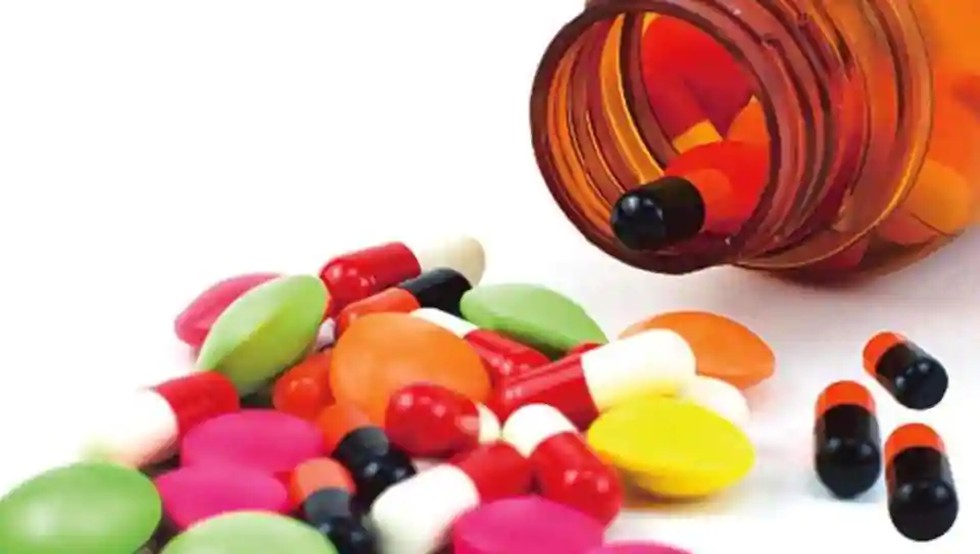
Pradhan Mantri Bhartiya Janaushadhi Pariyojana (PMBJP):
- Objective: To make available quality generic medicines at affordable prices to all.
- Implementing agency: Bureau of Pharma PSUs of India (BPPI), under the administrative control of the Department of Pharmaceuticals, Ministry of Chemicals & Fertilizers, Government of India.
- History:
- Jan Aushadhi Scheme was launched by the Department of Pharmaceuticals in 2008 across the country.
- In 2015, the Jan Aushadhi Scheme was revamped as Pradhan Mantri Jan Aushadhi Yojana (PMJAY).
- In 2016, it was again renamed as Pradhan Mantri Bhartiya Janaushadhi Pariyojana (PMBJP).
- Jan Aushadhi Scheme was launched by the Department of Pharmaceuticals in 2008 across the country.
- The Salient features of the Jan Aushadhi Scheme are:
- Making quality medicines available at affordable prices for all, particularly for the poor and disadvantaged, through specialized outlets called the Jan Aushadhi Stores (JAS).
- To ensure quality supply of generic medicines from the Central Public Sector Undertaking (CPSUs) and Good manufacturing practices (GMP) compliant manufacturers in the private sector.
- To ensure prescription of generic medicines by the Government doctors with proactive support from the State Governments.
- Making quality medicines available at affordable prices for all, particularly for the poor and disadvantaged, through specialized outlets called the Jan Aushadhi Stores (JAS).
- Other affordable quality health products launched under the PMBJP Scheme:
- Jan Aushadhi Suvidha Oxo-Biodegradable Sanitary Napkins at Rs. 2.50 per piece;
- Jan Aushahi Swabhiman at Rs. 140 for a pack of 5 Adult Diapers;
- Jan Aushahdi Bachpan at Rs 20 only for a pack of 5 baby diapers;
- Jan Aushadhi Ankur pregnancy test kits at Rs 20;
- Jan Aushadhi Urja Energy Drink at Rs. 35 for a300 gm pack, among others.
- Jan Aushadhi Suvidha Oxo-Biodegradable Sanitary Napkins at Rs. 2.50 per piece;
Present status and Achievements:
- Over 5050 Janaushadhi stores are functional across 652 districts in the country. According to Government, all blocks in the country would have atleast 1 PMBJP Kendra by 2020.
- The PMBJP scheme has led to total savings of approximately Rs.1000 crores for common citizens, as these medicines are cheaper by 50% to 90% of average market price.
- PMBJP is also providing a good source of self-employment with self-sustainable and regular earnings. Average sales per store per month has grown to Rs 1.50 lakhs (including OTC & other products).
Prelims Pointers
March 8, 2019

About:
- Launched in: 2003.
- Administration: ECHS is a flagship Scheme of the Ministry of Defence, Department of Ex-Servicemen Welfare. It functions under the Chiefs of Staff Committee through the Adjutant General in the Integrated Headquarters of Ministry of Defence (Army).
- HQ: The Central Organisation ECHS is located at Delhi.
- Objective: To provide allopathic medicare to Ex-servicemen pensioner and their dependents through a network of ECHS Polyclinics, Service medical facilities and civil empanelled/Govt hospitals spread across the country.
- Funding: The Scheme has been structured on the lines of CGHS to ensure cashless transactions, as far as possible, for the patients and is financed by the Govt of India.
- Recent decision:
- Union Cabinet has approved the grant of medical facilities under ECHS to World War-II Veterans, Emergency Commissioned Officers (ECOs), Short Service Commissioned Officers (SSCOs) and pre-mature retirees.
- This would benefit over 43,000 individuals who were so far not covered under the ECHS.
- Also, as a special dispensation, war-widows will be exempt from one-time contribution to join ECHS.
- Union Cabinet has approved the grant of medical facilities under ECHS to World War-II Veterans, Emergency Commissioned Officers (ECOs), Short Service Commissioned Officers (SSCOs) and pre-mature retirees.
Measures for welfare of Ex-Servicemen by the Government:
- Implementation of 'One Rank One Pension' for ex-servicemen has resulted in over 20 lakh ex-servicemen receiving more than Rs. 35,000 Crore under the scheme.
- Other welfare measures include -
- increase in pension by 40%,
- financial assistance to soldiers on their supreme sacrifice through newly created Army Battle Causalities Welfare Fund and
- skill development training in 36 job roles to over 30,000 retiring soldiers so far.
Prelims Pointers
March 8, 2019
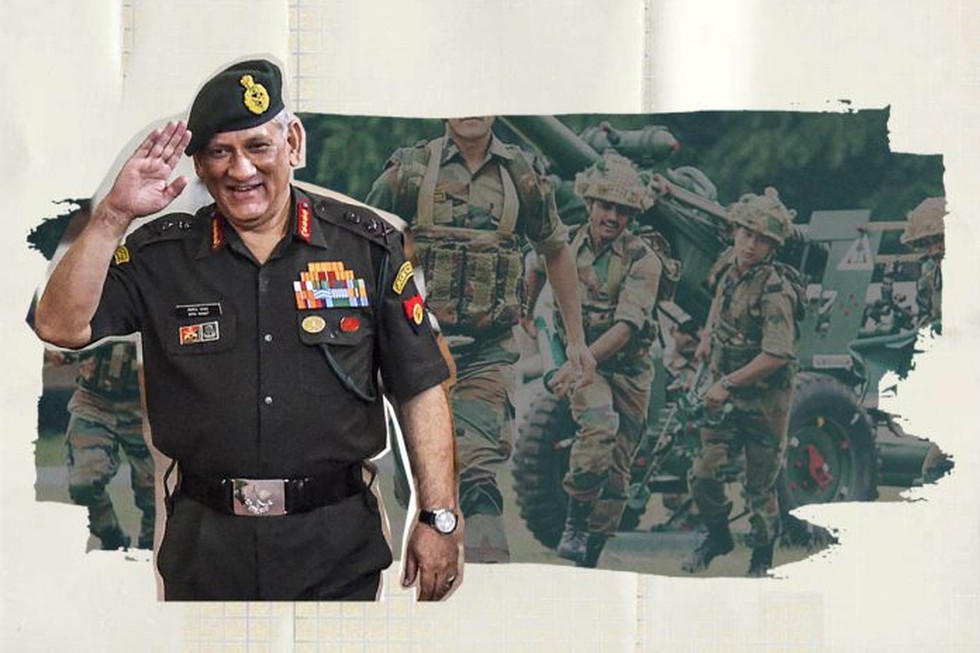
About:
The reforms include –
- Relocation of 229 officers from the Army headquarters: The number of officers being moved out was 20% of the number of officers in the Army headquarters in the national capital, and they would be deployed in forward locations along the borders with China and Pakistan.
- Creation of a new post of Deputy Chief for Military Operations & Strategic Planning: This post is being created to deal with military operations, intelligence, strategic planning and operational logistics.
- Setting up new wings for vigilance and human rights issues.
- Other reforms include restructuring the Army’s officer cadre, bringing down age of key commands, arresting rising revenue expenditure and “rightsizing” the force.
Prelims Pointers
March 8, 2019
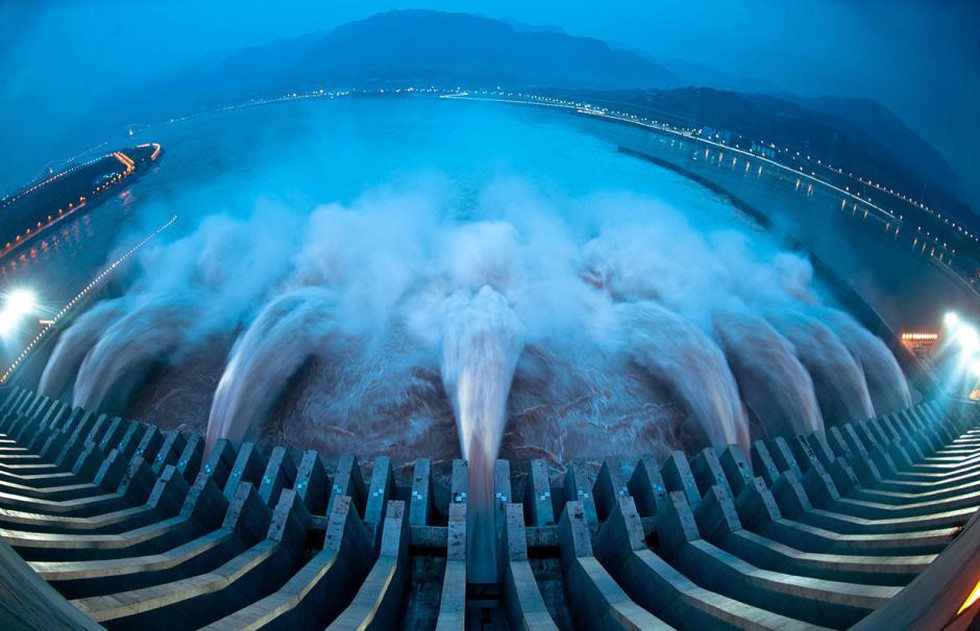
Details of Measures approved:
- Large Hydropower Projects to be declared as Renewable Energy source (as per existing practice, only hydropower projects less than 25MW are categorized as Renewable Energy).
- Declaring Large Hydropower Projects (HPO) as part of non-solar Renewable Purchase Obligation (RPO).
- Tariff rationalization measures including providing flexibility to the developers to determine tariff by back loading of tariff after increasing project life to 40 years, increasing debt repayment period to 18 years and introducing escalating tariff of 2%.
- Budgetary support for funding flood moderation component of hydropower projects.
- Budgetary support for funding cost of enabling infrastructure i.e. roads and bridges.
Need for Measures:
- India is endowed with large hydropower potential of 1,45,320 MW of which only about 45,400 MW has been utilized so far. Only about 10,000 MW of hydropower has been added in the last 10 years.
- The hydropower sector is facing challenges due to which the share of hydropower in the total capacity has declined from 50.36% in the 1960s to around 13% in 2018-19.
- DISOMS are reluctant sign Power Purchase Agreements (PPAs) Hydro Power due to higher tariff, particularly, in the initial years. One of the reasons for high tariff of hydropower is the loading of cost of flood moderation and enabling infrastructure in the project cost.
- In this backdrop, the decision has been taken to adopt measures to promote hydropower sector including providing budgetary support for flood moderation cost and enabling infrastructure cost and tariff rationalization measures to reduce tariff and thus the burden on the consumer.
Benefits of hydropower:
- Besides being environment friendly, hydropower also provides water security, irrigation and flood moderation benefits.
- As most of the hydro power potential is located in the higher reaches of Himalayas and North- East Region, it will result in overall socio-economic development of the region by providing direct and indirect employment in the power sector.
- Also, the country has targeted to add 160 GW of intermittent Solar and Wind power by 2022 and 40% of the total capacity from non-fossil fuel sources by 2030 to honour its Nationally Determined Contribution for Climate Change.
Prelims Pointers
March 8, 2019

Recent decisions by Union Cabinet:
The Union Cabinet chaired by Prime Minister Narendra Modi has approved:
- Setting up of a National Mission on Transformative Mobility and Battery Storage, to drive clean, connected, shared, sustainable and holistic mobility initiatives.
- Phased Manufacturing Programme (PMP) valid for 5 years till 2024 to support setting up of a few large-scale, export-competitive integrated batteries and cell-manufacturing Giga plants in India.
- Creation of a PMP valid for 5 years till 2024 to localize production across the entire Electric Vehicles value chain.
Both PMP schemes will be finalised by the National Mission on Transformative Mobility and Battery Storage.
National Mission on Transformative Mobility and Storage:
- Composition: This multi-disciplinary Mission with an Inter-Ministerial Steering Committee will be chaired by CEO NITI Aayog.
- Role:
- The Mission will recommend the strategies for transformative mobility and Phased Manufacturing Programmes (PMP) for EVs, EV Components and Batteries.
- A Phased Manufacturing Program (PMP) will be launched to localize production across the entire EV value chain. This Mission will finalise the details of such a program.
- The Mission will recommend the strategies for transformative mobility and Phased Manufacturing Programmes (PMP) for EVs, EV Components and Batteries.
- Impact:
- The Mission will enable India to develop a competitive domestic manufacturing ecosystem for electric mobility.
- The Mission will drive mobility solutions that will bring in significant benefits to the industry, economy and country. These solutions will help improve air quality in cities along with reducing India’s oil import dependence.
- The Mission will enable India to develop a competitive domestic manufacturing ecosystem for electric mobility.
- Background:
- During the Global Mobility Summit held in September 2018, Prime Minister outlined his vision for the future of mobility in India based on 7 C’s which are Common, Connected, Convenient, Congestion-free, Charged, Clean and Cutting-edge mobility.
- Hence, a need was felt to establish a dedicated multi-disciplinary Mission for transforming the mobility landscape with particular focus on: (1) Manufacturing, (2) Specification & standards, (3) Fiscal incentives, (4) Overall demand creation and projections, (5) Regulatory framework and (6) Research & Development.
- During the Global Mobility Summit held in September 2018, Prime Minister outlined his vision for the future of mobility in India based on 7 C’s which are Common, Connected, Convenient, Congestion-free, Charged, Clean and Cutting-edge mobility.
Prelims Pointers
March 8, 2019
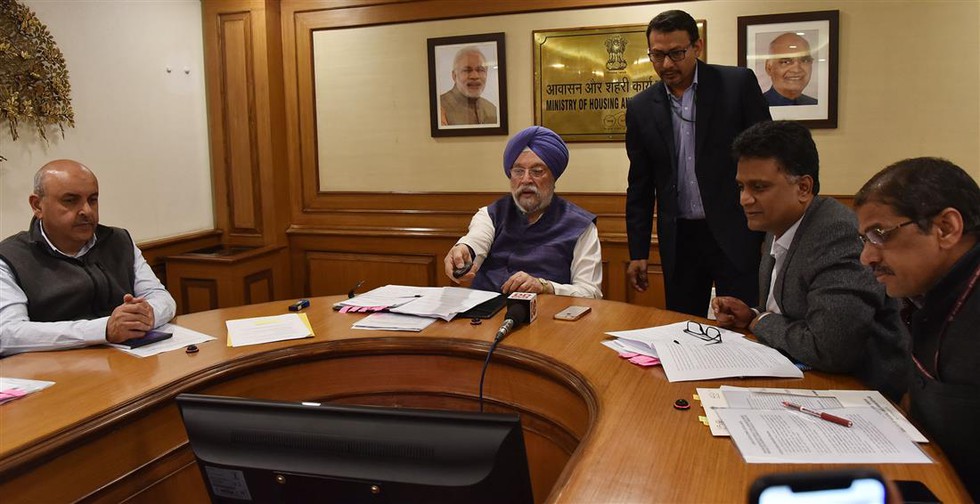
e-Dharti app:
- e-Dharti app is a new online system where all the three main modules i.e. Conversion, Substitution and Mutation have been made online.
- The payment system in Land & Development Office (L&DO) has also been completely digitized. The public can now submit their applications online by visiting L&DO website and are not required to visit this office for submission of them and for follow up of their applications.
- Work is also going on other three small modules namely Sale Permission, Mortgage Permission and Gift Permission and will be completed soon.
e-Dharti Geo Portal:
- e-Dharti Geo Portal is another important application on which Land & Development Office (L&DO) has started working.
- e-Dharti Geo Portal is GIS based mapping of all L&DO's approx. 65000 properties.
- Through this application each and every Government property under L&DO, whether it is allotted or still lying vacant, is proposed to be mapped on a portal called “e-Dharti Geo Portal”. Through this portal the Lessee of the property will be able to see the basic details of his/her property along with map showing its location.
- The Lessee can also be issued a Property Card from this office about his property if he asks for it.
Land & Development Office (L&DO)?
- Status: L&DO is an attached office of the Ministry of Housing and Urban Affairs.
- Role: It deals with public applications which are mainly related to Conversion of property from leasehold to freehold, Substitution of names of legal heirs and Mutation in the name of purchaser, etc. These three applications cover almost 95% of total applications received.
Prelims Pointers
March 8, 2019
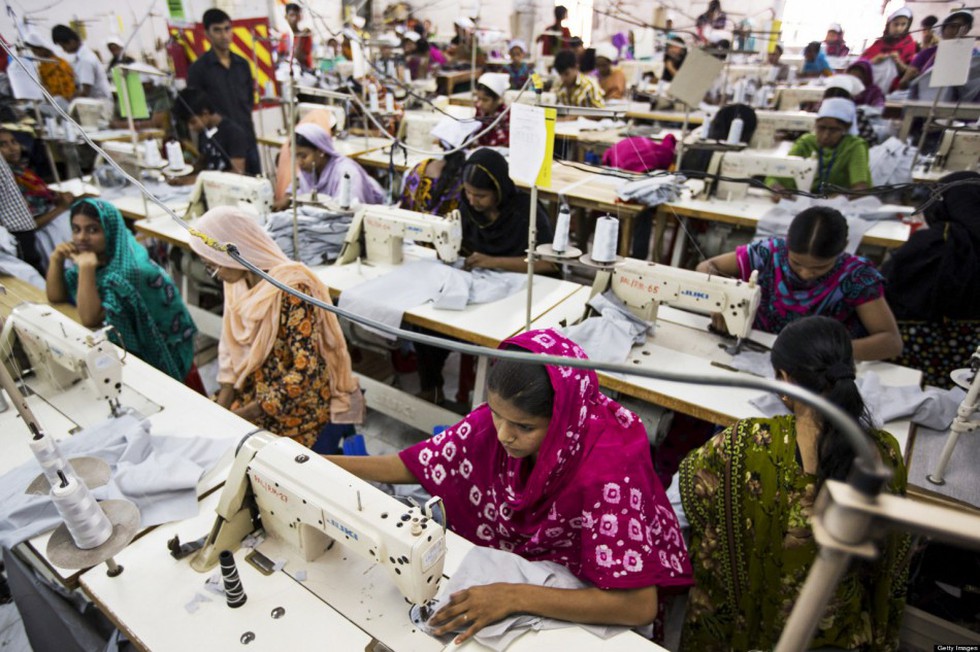
About:
- Background: At present, apparel and made-ups are the two segments supported under the Scheme for Rebate of State Levies (RoSL). However, certain State as well as Central Taxes are continued to be present in the cost of exports.
- Recent Cabinet Decision:
- The Cabinet decision provides for a scheme to rebate all embedded State and Central Taxes/levies for apparel and made-ups which have a combined share of around 56% in India’s textile export basket.
- Rebate of taxes/levies has been permitted through an IT-driven scrip system at notified rates.
- The Cabinet decision provides for a scheme to rebate all embedded State and Central Taxes/levies for apparel and made-ups which have a combined share of around 56% in India’s textile export basket.
- Benefits:
- The proposed measures are expected to make the textile sector competitive.
- This will enable the Government to take various measures for making exports of apparel and made-ups zero rated, thereby boosting India’s competitiveness in export markets and ensure equitable and inclusive growth of textile and apparel sector.
- The proposed measures are expected to make the textile sector competitive.
Prelims Pointers
March 8, 2019
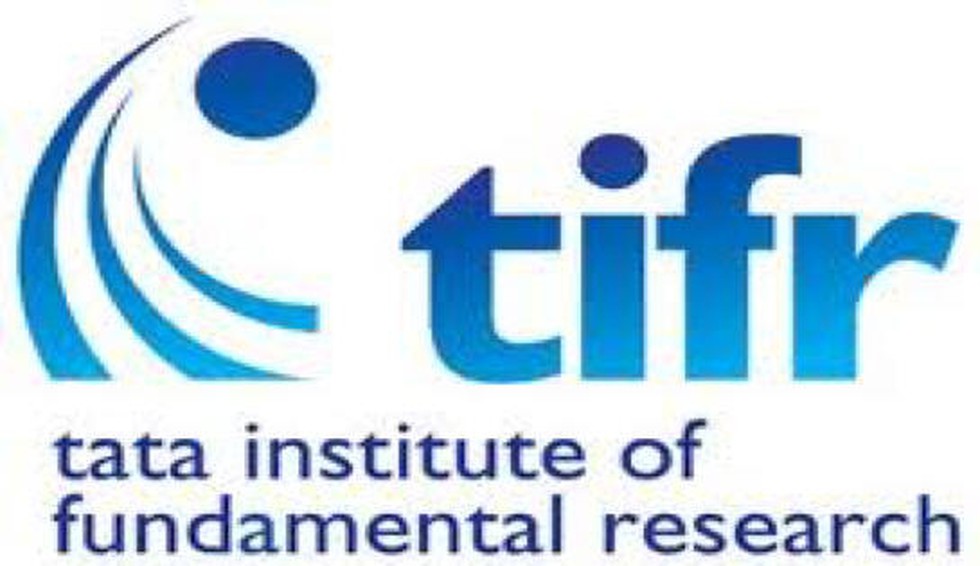
About:
- Status: It is a Deemed University and a research institution under the Department of Atomic Energy, Government of India.
- Mandate: It is country’s premier research institute dedicated to basic research in mathematics and the sciences.
- Location: With support from J.R.D. Tata, then chairman of the Tata Group, TIFR was founded on 1 June 1945, and Homi Bhabha was appointed its first director.
- Established in: 1945.
- Giant Metrewave Radio Telescope (GMRT): GMRT, located near Pune (Narayangaon) is an array of thirty fully steerable parabolic radio telescopes of 45 metre diameter, observing at metre wavelengths. It is operated by the National Centre for Radio Astrophysics, a part of the TIFR.
Prelims Pointers
March 8, 2019
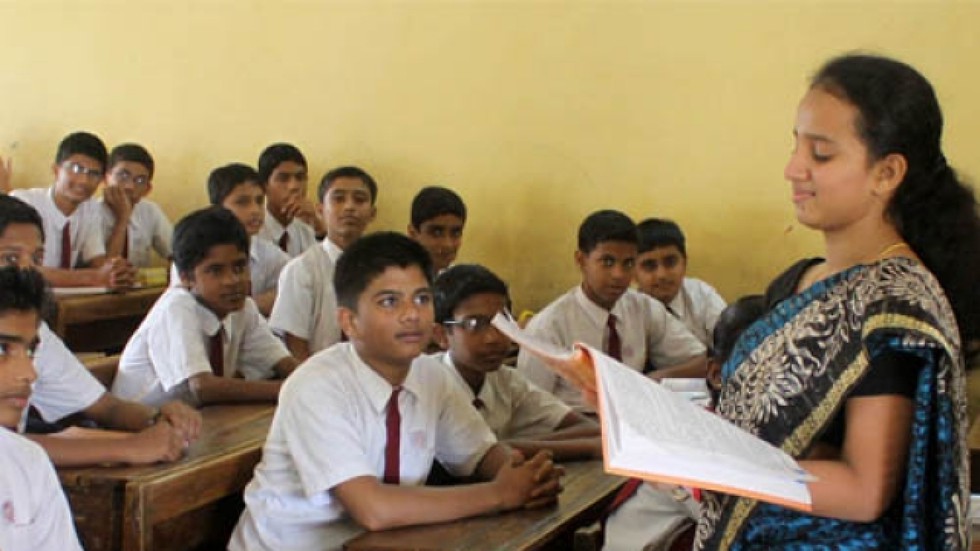
About:
- The Union Cabinet has approved an ordinance to return faculty reservations in higher education institutions to the earlier “200-point roster system”, whereby the University or college as a whole is considered as a unit, rather than each department.
- A number of teachers and student unions have been agitating for such a decision for over a year, arguing that the 13-point roster system, which considered each department as a separate unit, effectively phased out reserved positions, especially in smaller departments.
- The Ordinance will ensure that the Constitutional provisions of reservation for Scheduled Castes and Scheduled Tribes and the socially and educationally backward classes in the faculty recruitment will be protected.
March 7, 2019
Prelims Pointers
March 7, 2019
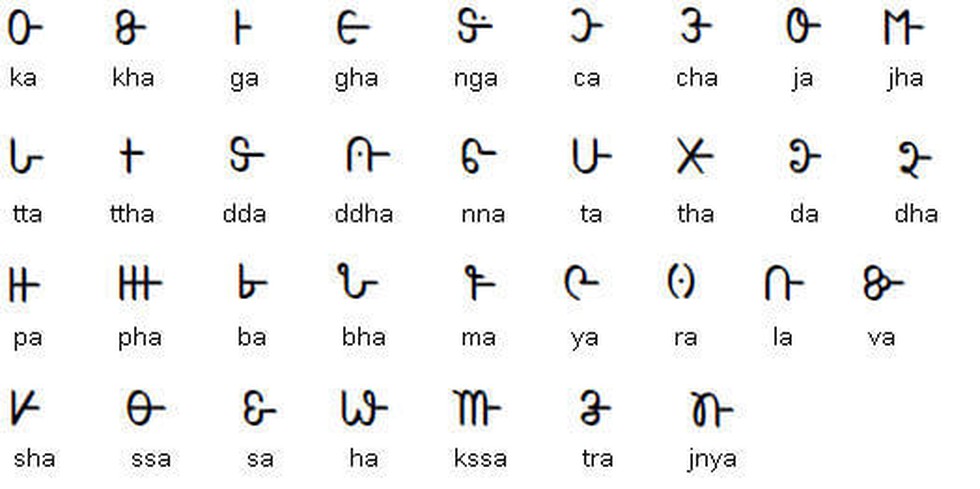
Gonds tribe:
- According to 2011 Census, Gonds, believed to belong to the Dravidian stock, have been notified as a scheduled tribe in the states of Andhra Pradesh, Bihar, Chhattisgarh, Gujarat, Jharkhand, Karnataka, Madhya Pradesh, Maharashtra, Odisha, Uttar Pradesh, Uttaranchal and West Bengal.
- The largest numbers are concentrated in the central part of India, known among tribal groups as Gondwana, which includes the Satpuda Plateau, a portion of the Nagpur plain area and the Narmada Valley.
- Census 2011: The total population of the Gond tribe in the country is 11,344,629. This tribe comprises 13.45 per cent of the total Scheduled Tribes’ population of India, and is the largest tribal group in the country.
Gondi Language:
- Language family: Gondi is a South-Central Dravidian language.
- Census 2011: The total Gondi speaking population, according to it, is 2,713,790.
- Script:
- The Gondi script is perhaps the only script in the country besides Urdu which is written right to left.
- In the northern and central India, it is the only language, barring Gujarati, which has a script of its own. All other north and central Indian languages use the Devnagri script.
- The Gondi script is perhaps the only script in the country besides Urdu which is written right to left.
- Dialects:
- Gondi, is heavily influenced by the other local languages spoken in the respective states. E.g. the Gondi spoken in Andhra Pradesh is known colloquially as “Telugu Gondi” and that spoken in Maharashtra is known as “Marathi Gondi”.
- Some of the more important dialects are Dorla, Koya, Madiya, Muria, and Raj Gond.
- Gondi, is heavily influenced by the other local languages spoken in the respective states. E.g. the Gondi spoken in Andhra Pradesh is known colloquially as “Telugu Gondi” and that spoken in Maharashtra is known as “Marathi Gondi”.
- Neglect by Government of India:
- The Gond tribal community feel that the language has been unduly ignored by the Indian government by not including it in the 8th Schedule of the Constitution.
- Gondi has also not been included under the Technology Development for Indian Languages (TDIL) programme of the Department of Electronics and Information Technology, which is developing a unicode – a programme for computers, which allows the user to type in any of the 22 Scheduled Indian languages.
- The Gond tribal community feel that the language has been unduly ignored by the Indian government by not including it in the 8th Schedule of the Constitution.
Recent decision:
- According to Madhya Pradesh CM, the rapid decline in the number of people who speak that tongue is a matter of concern. Hence, there is a need to save it from becoming a thing of the past.
- He also announced that the International Day of the World’s Indigenous Peoples will be observed as a holiday in Madhya Pradesh on August 9 to redress adivasi grievances.
Prelims Pointers
March 7, 2019

National Centre for Good Governance (NCGG):
- Parent agency: It is an autonomous institute under Department of Administrative Reforms and Public Grievances, Union Ministry of Personnel, Public Grievances and Pensions.
- Objective: To promote good governance through Capacity Building on Public Policy and Governance both at National and International Level and carrying out studies/ action research on issues relating to governance.
- HQ: Its head office is at New Delhi and registered office at Mussoorie.
- Background: The NCGG traces its origin to the National Institute of Administrative Research (NIAR). NIAR was set up in 1995 by the Lal Bahadur Shastri National Academy of Administration (LBSNAA). NIAR was subsequently rechristened with an expanded mandate, as NCGG, which was inaugurated in 2014.
Indian Institute of Corporate Affairs (IICA):
- Parent agency: Union Ministry of Corporate Affairs, Government of India.
- Status: It is a society registered in 2008.
- Objective: To function as a holistic, Capacity building Institution and think-bank for corporate regulations and reform, though synergised knowledge creation and management, global partnership for real time solutions.
- HQ: Manesar, Haryana.
Prelims Pointers
March 7, 2019
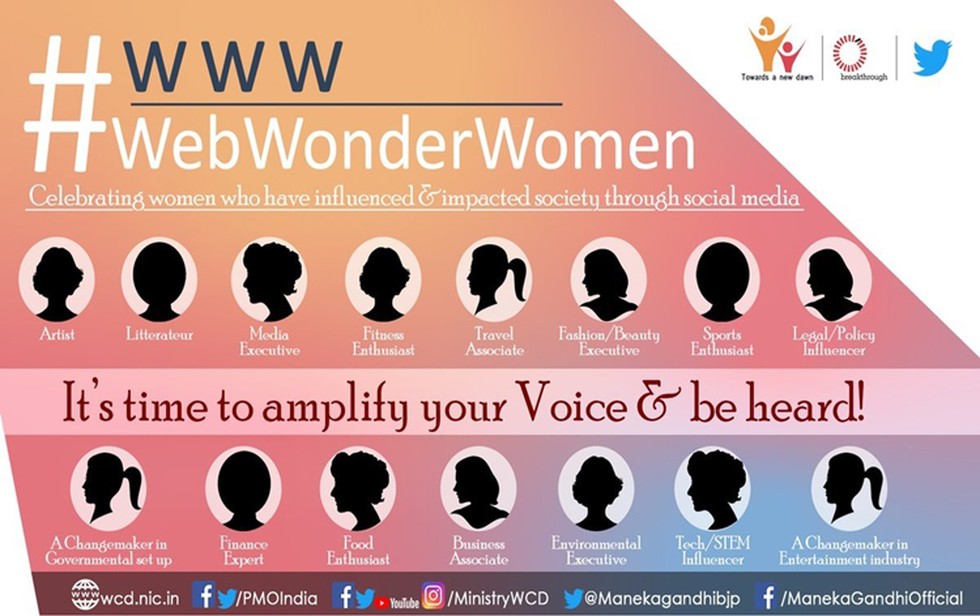
About:
- Background: In January 2019, the Union Ministry of Women and Child Development launched an online campaign, ‘#www: Web Wonder Women’.
- Objective: The Campaign aims to discover and celebrate the exceptional achievements of India women across the globe, who have used the power of social media to run positive & niche campaigns to steer a change in society.
- Agencies involved: for this campaign, Union Ministry of Women and Child Development has partnered with Breakthrough and Twitter India.
- Features of the campaign:
- The Campaign invited Entries via Nominations from across the world. Indian-origin women, working or settled anywhere in the world, are eligible for nomination.
- Nominations were invited in a large number of categories including Health, Media, Literature, Art, Sports, Environmental protection, fashion among others.
- The shortlisted entries were open for public voting on Twitter and the finalists were selected by a specialized panel of judges.
- The Campaign invited Entries via Nominations from across the world. Indian-origin women, working or settled anywhere in the world, are eligible for nomination.
Initiatives to recognize women achievers:
- On 8th March, the Ministry honours women who have contributed to society but have remained unsung with the Nari Shakti Puruskar, which is conferred by the President of India at Rashtrapati Bhawan.
- In 2018, the Ministry hosted 'First Ladies', a first-of-its-kind Government initiative to felicitate exceptional women who were the first to set a milestone in their respective fields.
- In 2015, the Ministry had collaborated with Facebook to recognise '100 Women Achievers' who have excelled in diverse sectors of public work. These women were hosted by the President of India.
- Web Wonder Women is another initiative under the ‘Women Achievers’ campaign of the Ministry.
Prelims Pointers
March 7, 2019
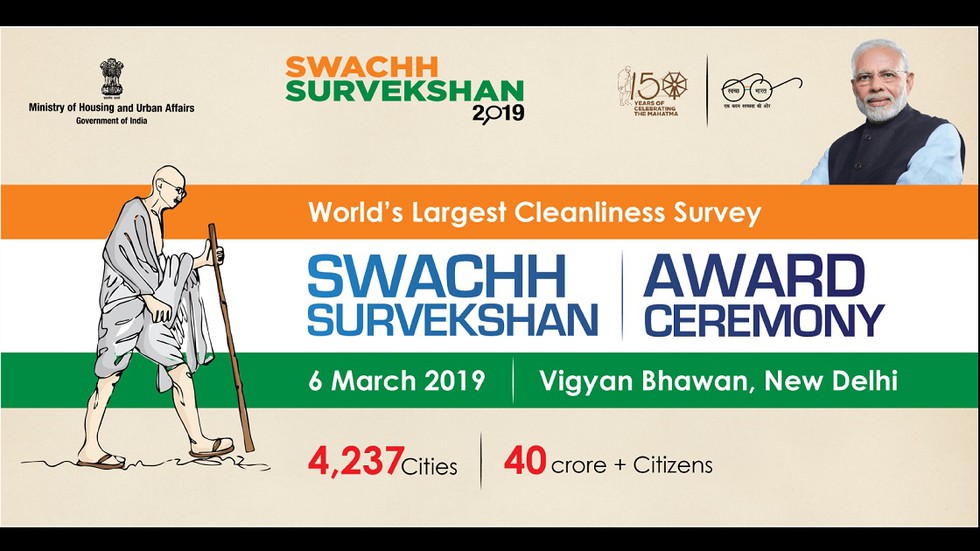
About:
- Every year, cities and towns across India are awarded with the title of 'Swachh Cities' on the basis of their cleanliness and sanitation drive as a part of the Swachh Bharat Abhiyan that was launched in 2014.
- Ministry of Housing and Urban Affairs (MoHUA) conducted its first survey ‘Swachh Survekshan-2016’ survey for ranking 73 cities (Urban Local Bodies), under the ambit of the Swachh Bharat Mission (Urban).
- ‘Swachh Survekshan-2017’ covered 434 cities, ‘Swachh Survekshan 2018’ covered 4,203 cities and Swachh Survekshan 2019 has covered.
- Ministry of Housing and Urban Affairs (MoHUA) conducted its first survey ‘Swachh Survekshan-2016’ survey for ranking 73 cities (Urban Local Bodies), under the ambit of the Swachh Bharat Mission (Urban).
- Swachh Survekshan 2019 covered all Urban Local Bodies in the country (4,237 cities), making it the largest such cleanliness survey in the world.
- Top ranked cities received a statue of Father of the Nation Mahatma Gandhi as award for their work towards cleanliness.
- Indore bagged award for cleanest city for third straight year in Swachh Survekshan. Indore has reported a 70% drop in vector-borne ailments in 2019, which is being attributed to Swachh Bharat Abhiyan.
List of Winners:
- India's Cleanest City - No.1: Indore (Madhya Pradesh).
- India's Cleanest City - No.2: Ambikapur (Chhattisgarh).
- India's Cleanest City - No.3: Mysuru (Karnataka).
- Cleanest big City' (>10 Lakh) : Ahmedabad (Gujarat).
- Cleanest Medium City' (3 - 10 Lakh): Ujjain (Madhya Pradesh).
- 'Cleanest Small City' (1 - 3 Lakh): New Delhi Municipal Council (Delhi).
- Cleanest Capital/UT City': Bhopal (Madhya Pradesh).
- Best Ganga Town: Gauchar (Uttarakhand).
Prelims Pointers
March 7, 2019
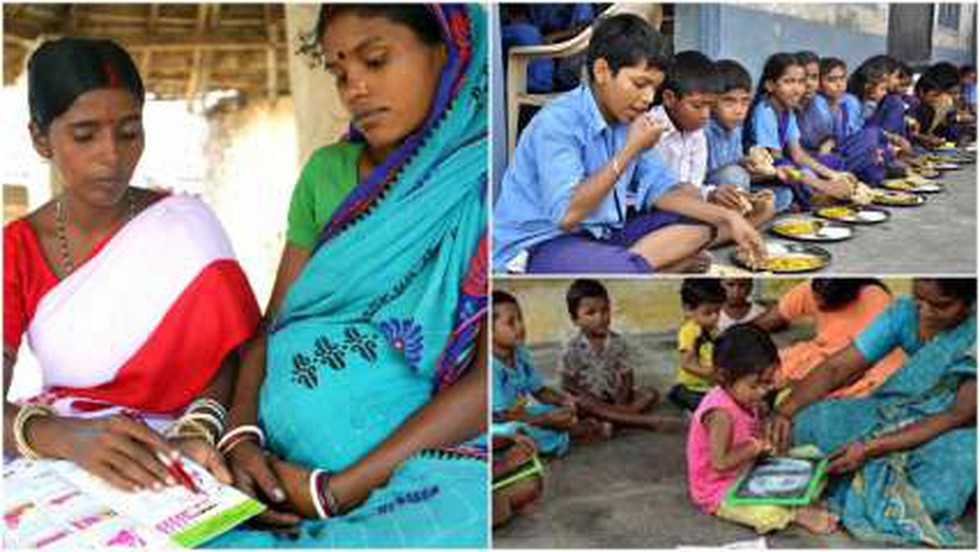
Recent study published in WHO Bulletin:
- The study analyses the findings of the National Family Health Survey 2005-2006 and 2015-2016 to compare the coverage of ICDS over a 10-year period.
- During this time, the average respondents benefiting from these services increased from 9.6% to 37.9% for supplementary food, 3.2% to 21% for health and nutrition education, 4.5% to 28% for health check-ups and 10.4% to 24.2% for child-specific services over a period of 10 years.
- At the same time, the poorest of the poor or quintile 1, who were the largest beneficiaries in 2006, got left behind quintile 2 and quintile 3 by 2016 for all four indicators such as supplementary food, counselling on nutrition, health check-ups and early childhood services.
- Also, Mothers without any schooling were the lowest beneficiaries as compared to those with primary and secondary schooling in 2006, and they continued to be so in 2016.
Prelims Pointers
March 7, 2019
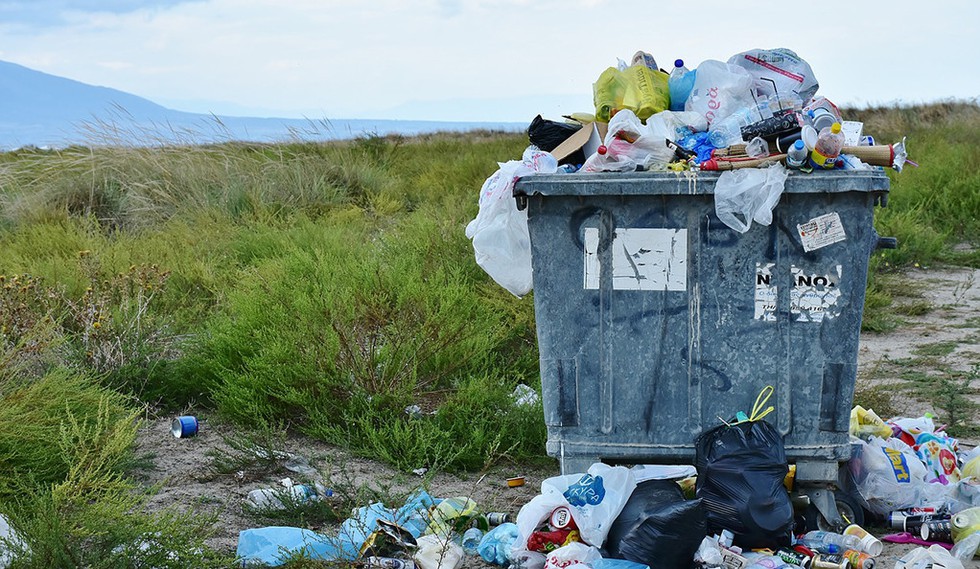
About:
- The Ministry of Environment has amended the Hazardous and Other Wastes (Management & Transboundary Movement) Rules, 2016 on March 1, 2019.
- The amendment has been done to strengthen the implementation of environmentally sound management of hazardous waste in the country.
Salient features of the Hazardous and Other Wastes (Management& Transboundary Movement) Amendment Rules, 2019:
- Solid plastic waste has been prohibited from import into the country including in Special Economic Zones (SEZ) and by Export Oriented Units (EOU).
- Exporters of silk waste have been given exemption from requiring permission from the Ministry of Environment.
- Electrical and electronic assemblies and components manufactured in and exported from India, if found defective can now be imported back into the country, within a year of export, without obtaining permission from the Ministry of Environment.
- Industries which do not require consent under Water (Prevention and Control of Pollution) Act 1974 and Air (Prevention and Control of Pollution) Act 1981, are now exempted from requiring authorization also under the Hazardous and Other Wastes Rules, 2016, provided that hazardous and other wastes generated by such industries are handed over to the disposal facilities.
Prelims Pointers
March 7, 2019
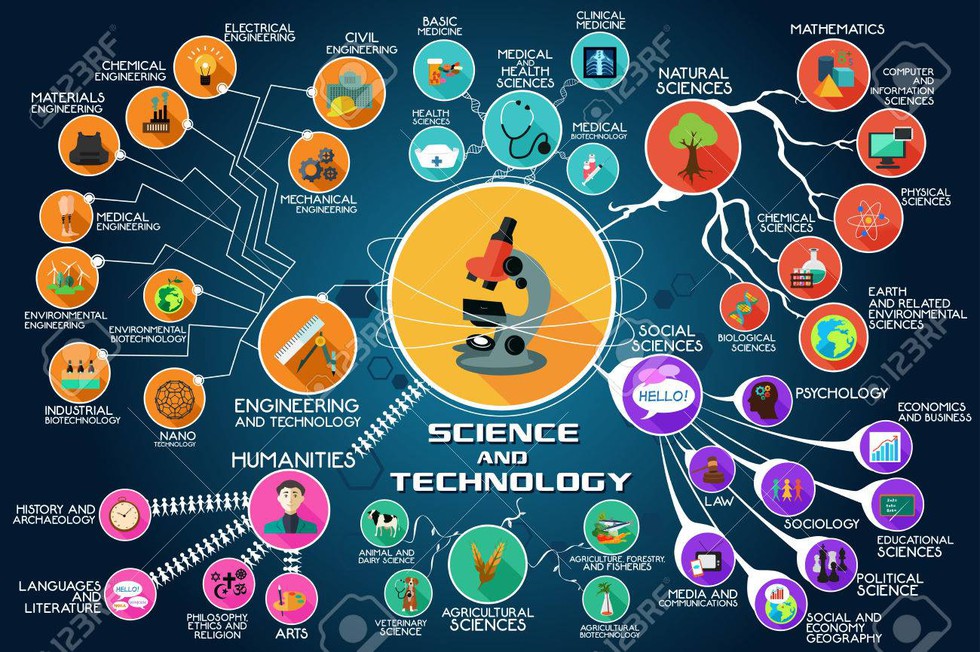
About:
- The Office of the Principal Scientific Adviser (PSA) to the Government of India has held 4 meetings of the PM-STIAC since October 2018 and key national missions emerged from the discussions, which are being driven by the PM-STIAC through the PSA’s office.
- Each mission is being led by a lead Ministry and will engage international and national institutional partners, young scientists and industry.
List of Nine Science and Technology Missions:
- Natural Language Translation: The mission will eventually enable access to teaching and research material bilingually i.e. in English and one’s native Indian language.
- Quantum frontier: This mission aims to initiate work in control of the quantum mechanical systems.
- Artificial intelligence: This mission will focus on efforts that will benefit India in addressing societal needs in areas such as healthcare, education, agriculture, smart cities and infrastructure, including smart mobility and transportation.
- National biodiversity mission: This mission will include a comprehensive documentation of India’s biodiversity with the potential for cataloguing and mapping all lifeforms in India including associated cultural and traditional practices.
- Electric vehicles: This mission is critical for India to reduce fossil fuel consumption and mitigate emissions by making Electric Vehicles (EVs) economically viable and scalable.
- BioScience for Human Health: The primary goal of the mission is to construct comprehensive reference maps of genomes and to understand the dynamics of how exposure to different environments have impact on our bodies.
- Waste to Wealth: The goal of the mission is to identify, develop and deploy technologies to treat waste to generate energy, recycle materials and extract worth.
- Deep Ocean Exploration: The purposes of this mission is to scientifically explore the deep oceans towards improving our understanding of the blue frontier.
- AGNIi: This mission aims to support the national efforts to boost the innovation ecosystem in the country by connecting innovators across industry, individuals and the grassroots to the market and helping commercialise innovative solutions.
Prime Minister’s Science, Technology and Innovation Advisory Council (PM-STIAC)?
- Composition: The 9-member PM-STIAC is headed by Government of India’s Principal Scientific Adviser to (K. Vijay Raghavan).
- Mandate:
- To act as a high-level advisory body to several ministries and execute mission-oriented programmes.
- To render advice on all matters related to Science, Technology and Innovation and monitors the implementation of the Prime Minister’s vision on these issues.
Prelims Pointers
March 7, 2019
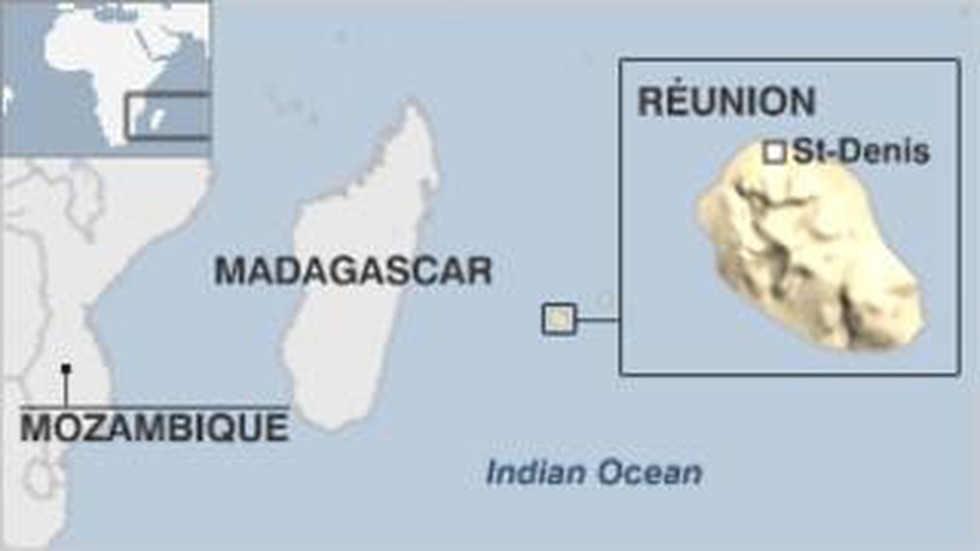
About:
- Indian Space Research Organisation (ISRO) and National Centre for Space Studies (CNES) will explore putting up a constellation of low-Earth orbiting satellites that will identify and track movement of ships globally esp. in the Indian Ocean where France has its Reunion Islands.
- Before that, they will initially share data from their present space systems and develop new algorithms to analyse them.
- The agreement comes a year after the broad collaboration plan the two governments initiated during French President Emmanuel Macron’s visit in March 2018.
Indo-French space collaboration:
- The two agencies have earlier put up two climate and ocean weather monitoring satellites Megha-Tropiques (2011) and SARAL-AltiKa (2013) that are considered a model for future space collaborations.
- This fleet will be augmented with the launch of Oceansat-3-Argos mission in 2020 along with a joint infrared Earth-observation satellite.
Do you know?
Reunion Island is an overseas department and region of France and an island in the Indian Ocean, east of Madagascar.
Reunion is geologically situated in the Somali plate. It is above a hotspot in the Earth's crust. The Piton de la Fournaise, a shield volcano on the Reunion Island has erupted more than 100 times since 1640.
Prelims Pointers
March 7, 2019
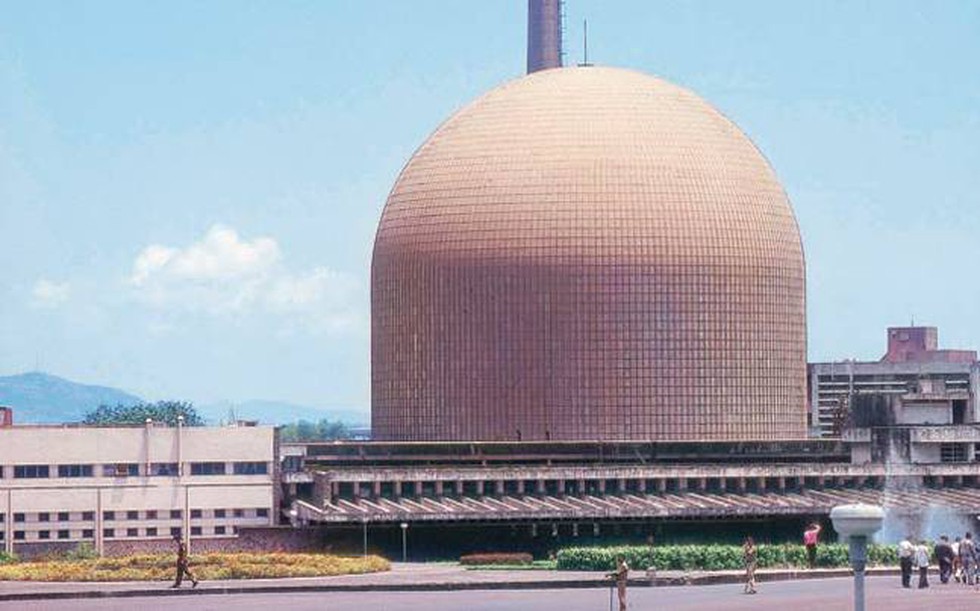
Bhabha Atomic Research Centre (BARC):
- It is the India's premier multi-disciplinary nuclear research facility.
- Mandate:
- Its core mandate is to sustain peaceful applications of nuclear energy, primarily for power generation.
- It manages all facts of nuclear power generation, from theoretical design of reactors to, computerised modelling and simulation, risk analysis, development and testing of new reactor fuel materials, etc.
- It also conducts research in spent fuel processing, and safe disposal of nuclear waste. Its other research focus areas are applications for isotopes in industries, medicine, agriculture, etc.
- Its core mandate is to sustain peaceful applications of nuclear energy, primarily for power generation.
- Established in: 1954.
- Motto: Atoms in the service of the Nation.
- Headquarters: Trombay, Mumbai, Maharashtra.
- Parent organisation: Department of Atomic Energy.
- Research institutions affiliated to BARC include: IGCAR (Indira Gandhi Centre for Atomic Research), RRCAT (Raja Ramanna Centre for Advanced Technology), and VECC (Variable Energy Cyclotron Centre).
Prelims Pointers
March 7, 2019

About:
- The grant of recognition is subject to compliance of the provisions of National Sports Development Code of India, 2011.
- The recognition means granting a major role to KIFI Association for promotion and Development of Kudo sport in India.
- The Kudo sport is placed in the ‘Others’ category.
Do you know?
- Kudo is an official Japanese Cultural Budo sport under the same category as Judo, Aikido and Kendo.
- KUDO is Mixed Martial Arts (MMA); it is a safe, scientific, modern, & practical Combination of traditional & sports Karate, Judo, Jujutsu, Muay Thai, & Kickboxing.
- Kudo is recognized by over 10 national Olympic committees and has over 50-member countries.
- Kudo and Daido Juku are worldwide copyrights and all of its instructors and branch chiefs are certified under the Kudo International Federation (K.I.F).

